Baths of Diocletian
Tickets sell out fast in Rome: check availability now »
Visit the greatest bath complex of Ancient Rome at the Baths of Diocletian.
Covering 13 hectares with a capacity of roughly 3000, the Baths of Diocletian were the largest, most impressive baths in Ancient Rome – and twice the size of the Baths of Caracalla .
- Wander through the interconnected halls of the largest bath complex in Rome.
- Visit another of the works of Michelangelo in the Baths of Diocletian, in Michelangelo’s cloister.
- Discover the history of the written word in the Museum of Written Communication, and marvel at 20,000 objects of ancient inscriptions.

Tickets & Prices
Discover which ticket into the Baths of Diocletian is best suited to you.
Baths of Diocletian Ticket
Guarantee your entrance into the Baths of Diocletian by buying a ticket online and reserving your place beforehand. This ticket grants you entrance into every corner of the ancient bath complex without having to wait in line at the ticket office.
Important Ticket Information:
- Opening times: Tuesday to Sunday from 11 am to 6 pm. The baths are closed on Mondays
- Last admission at 5 pm
- This ticket is valid for a single-entrance
- The ticket can be printed at home or shown on a mobile device
- Wheelchair accessible
- Entrance to the other sites of the National Roman Museum are not included in the price
National Roman Museum Combined Ticket
The Baths of Diocletian are one of the four historical sites that make up the National Roman Museum, the others are Palazzo Altemps, Palazzo Massimo, and Crypta Balbi. If you purchase a combined ticket for the museum, you gain access to all four.
- Opening times: Tuesday to Sunday from 11 am to 6 pm
- The last admission is at 5 pm
- The validity of the ticket is one week
- You are allowed a single entrance into all but the Palazzo Massimo during the week, which allows two.
What to See and Do
The Baths of Diocletian were once the greatest in Rome. While much of the original structure has been destroyed, there is still plenty to see during your visit. This is what you can expect to find:
Great Halls of the Baths
Wander through the great halls of the baths, an interconnected complex modeled on the Baths of Caracalla, and admire both the scope of the ruins and the advanced plumbing left behind by the Romans (including underfloor heating!).
Though the baths, saunas, and steam rooms were all present, these halls were more than just a bath complex. The Baths of Diocletian were more akin to an entertainment complex than a simple place for bathing, with libraries, theatres, and gymnasiums all contained on the grounds. As you walk through the numerous halls of the site, you will see the remains of Roman craftsmanship and ingenuity everywhere you go.
The Natatio
Though much of the grandeur of the setting has been lost to time – and looting – you can still see the echo of the ornate decoration that would have lined the walls.
The natatio was a colossal open-air swimming pool surrounded by high walls adorned with marble statues and towering columns. Today, these details are lost – but the sheer size of the space is enough to impress visitors regardless. In the 16th century, part of the huge space occupied by the natatio was used as the site for the small cloister of the Charterhouse.
The Charterhouse of Santa Maria degli Angeli
Built based on the drawings of Michelangelo , the Charterhouse was designed in accordance with monastic rules. It contained areas intended for communal living and seclusion and an elegant small cloister.
Michelangelo’s Cloister
Like many works of Michelangelo’s in Rome, this cloister was actually built after his death. Using his design, the construction of one of the largest cloisters in Italy began in 1565, and the upper floors weren’t finished until 1676.
Your eyes will immediately be drawn to the statues of colossal animal heads in the cloister, but the center is marked by a rather more elegant dolphin fountain. You can see the centuries-old ‘Cypress of Michelangelo’ among the cypresses that surround the fountain. One of the most interesting sights in the cloister is located near the entrance; the trompe-l’oeil door by Filippo Balbi (1885), depicting the Carthusian monk Fercoldo – the father of Pope Clement IV.
Museum of Written Communication
This museum, which was first opened in the 19th century, has one of the most impressive collections of inscriptions in the world. Boasting 20,000 items from people of all social stations in ancient times, the collection has everything from inscripted slave collars to household pottery. It offers a fascinating insight into the history of writing itself, giving visitors the chance to see some of the earliest surviving examples of the written word.
Map & Directions (Location)
The Baths of Diocletian are located on Viale Enrico de Nicola, 78, 00185, close to Termini train station . It is centrally located, and within walking distance of Rome’s most famous sites – the Trevi Fountain is 20 minutes away on foot.
You can easily reach the baths using public transport . The closest metro stop is Termini (Lines A and B), which is only a short walk away from the entrance. Several buses stop at the Termini/De Nicola bus stop, including 75, n92, nMB, and nMB1.
Did You Know That: 3 Interesting Facts
- In ancient times, the baths could accommodate up to 3,000 people at once.
- While we often think of a total collapse of Roman society after the fall of Rome in 476 AD, not everything was destroyed. The Baths of Diocletian were in use for almost a century afterward.
- The Baths are located at the foot of the smallest of the seven hills of Rome, Viminal Hill.
Learn more about the largest bath complex in Ancient Rome in this timeline of its most important events:
- 298 AD. The construction of the baths was commissioned by Maximian.
- 298-306 AD. The Baths of Diocletian are constructed.
- Mid-6th century. A battle between the Eastern Roman Empire and the Ostrogothic Kingdom of Italy rages in the city, damaging the aqueducts that supply water to the baths. They are not fit for use after this incident and fall into disrepair.
- 1561. Pope Pius IV commissioned Michelangelo to build the Church and Charterhouse of Santa Maria degli Angeli on the grounds of the baths.
- 1889. The National Roman Museum was created, encompassing Palazzo Altemps, Palazzo Massimo, Crypta Balbi, and the Baths of Diocletian.
The Baths of Diocletian were used as public baths for the local people.
The Baths of Diocletian are very large, and visitors can expect to spend anywhere from one to three hours there.
The Baths of Diocletian were built between 298 and 306 AD.
Address: National Roman Museum, Baths of Diocletian, Viale Enrico de Nicola 78, 00185 Roma, Italy · view larger map
You are using an outdated browser. Please upgrade your browser .

- Plan your visit
- Things to do
Public baths in ancient Rome – The Baths of Diocletian

- In Plan your visit Things to do
These former public baths were named after the Roman Emperor Diocletian , and are located within Rome. Construction started in 298 AD and was finished in 8 years. Known for being ancient Rome’s biggest baths of their kind, the brick and marble structure is a sight to behold.
They served the local community for relaxation, socialising and sport for over 200 years before falling into ruin. Following decades of reconstruction works, the baths are open to the public in all their glory for you to visit! Read on to find out more.
- 1 About the National Roman museum – Baths of Diocletian
- 2 Baths of Diocletian Rome Facts – Intriguing details you didn’t know
- 3 Baths of Diocletian Plan
- 4 Details about Construction
- 5 Where & How to Get to Baths of Diocletian Tickets
- 6 National Roman Museum & Baths Location
- 7 Baths of Diocletian Opening Hours
- 8 Baths of Diocletian Map
- 10 Conclusion
About the National Roman museum – Baths of Diocletian

The baths are part of the National Roman Museum – a collection of amazing statues, art and other artefacts spread across 4 museums in Rome (more about them later).
Many of the artefacts from the museum itself have been distributed elsewhere. But don’t worry, there is more than enough to see. Opened to the public from the year 2008, the Baths of Diocletian architecture is hugely impressive.
Check out in particular the exhibition on early Latin peoples , and marvel at how this structure was even build way back then. Beautiful frescoes can be witnessed high up on the ceilings, and don’t forget a long stroll in the gardens to marvel at the artwork on display. Definitely on our list for things to do in Rome once you have hit off the Colosseum and the Vatican City.
Baths of Diocletian Rome Facts – Intriguing details you didn’t know
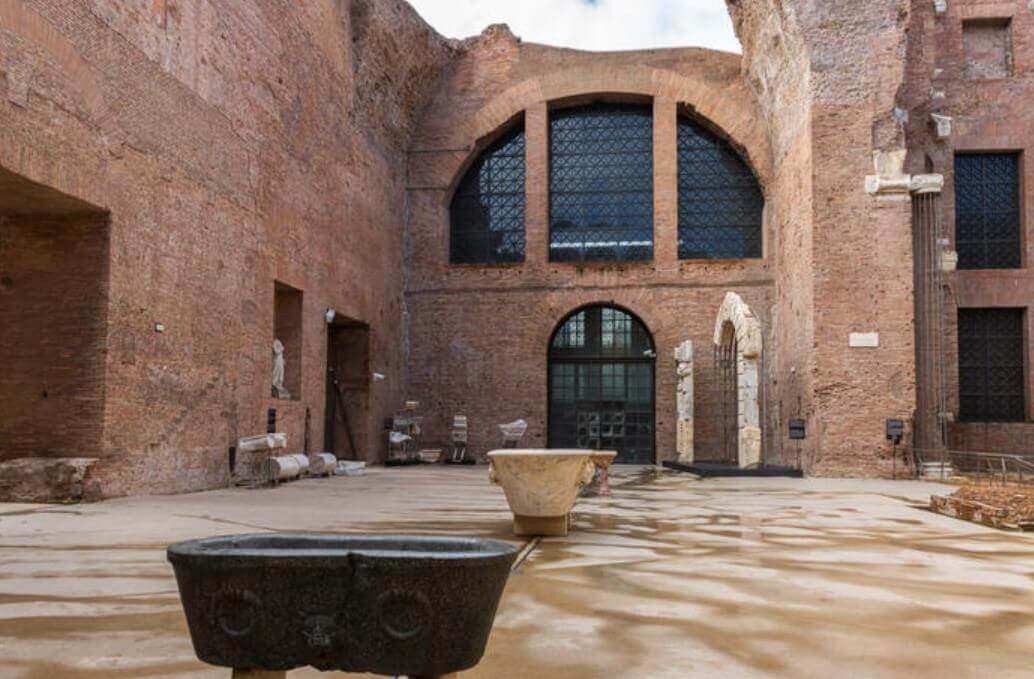
- The site is so impressive that nowadays it is used on occasion for state funerals
- The residents of the area used the baths for over 200 years, and only stopped when Goths severed the water supply in the 16th century as part of their invasion of Rome.
- Rumour has it that Diocletian never actually visited Rome himself, leaving the running of that part of the Empire to Maximian.
- The baths are said to be able to hold 3000 people
- Diocletian had a bad reputation about the number of Christian slaves that died during the construction, even though he was not directly involved.
Baths of Diocletian Plan
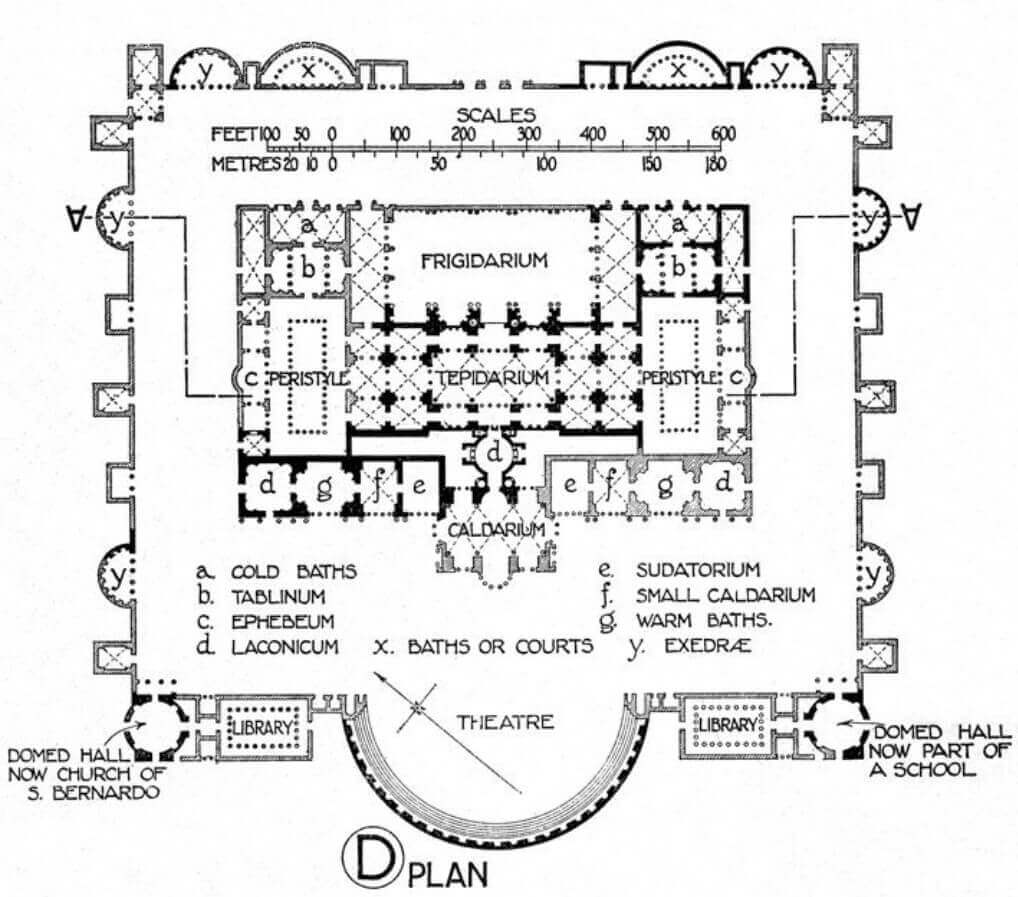
The massive structure, which also included a gym, library and lots of different areas for bathing, spread over 130,000 metres squared. Here, hot, cold and warm baths were available for public use.
From the huge site, located on the Viminal hill, only a small portion is open to the public, but you can really appreciate the scale. Especially if you climb up the Santa Maria degli Angeli for the best views.
The plan for the Baths was modelled on the Baths of Caracalla , with the aim of being bigger and more impressive. The central area was located within a large square, which totalled 376 x 361 meters, and became the focal point for life in the area.
Details about Construction
Built entirely in brick encased in beautiful marble. Over ten thousand Christian slaves undertook this tedious and laborious work.
The construction of the Baths of Diocletian Rome took 8 years, during which many of the slaves died of exhaustion. The Santa Maria degli Angeli Basilica was constructed in memory of those that lost their lives.
Where & How to Get to Baths of Diocletian Tickets
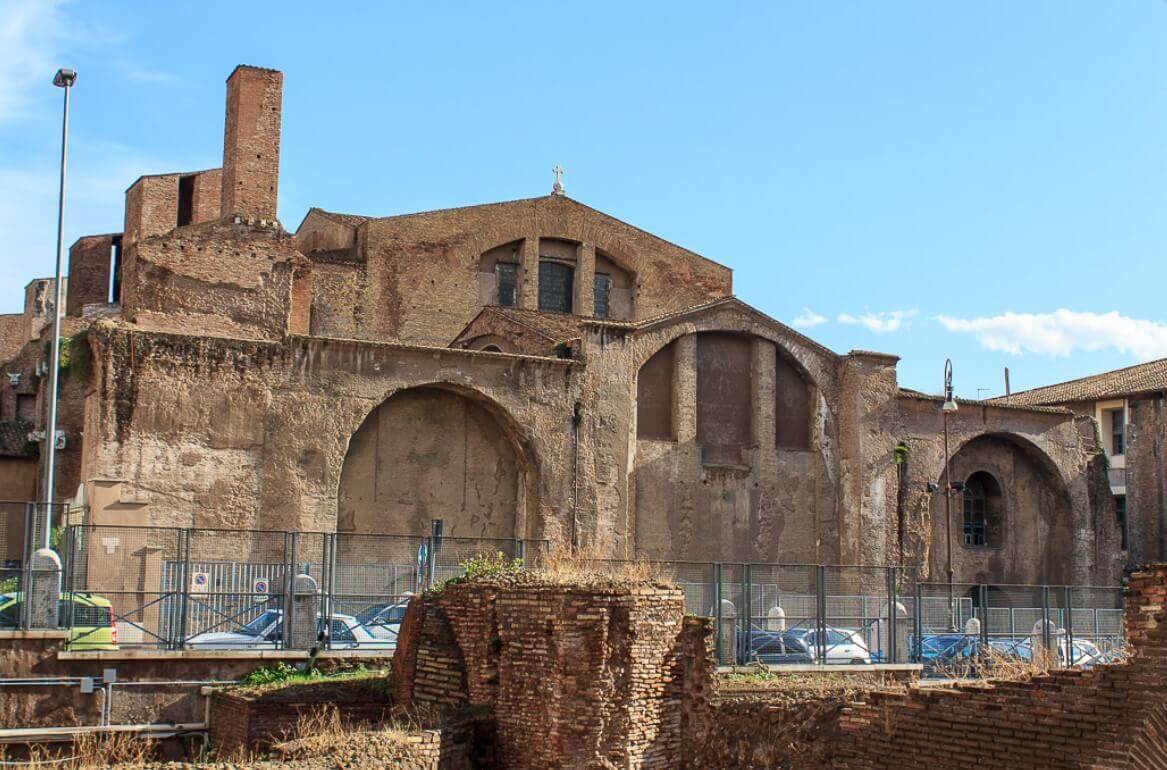
Ticket prices are pretty reasonable as they cover all 4 of the Roman Museum complexes.
This means you can also visit the following cool attractions with your pass:
- Crypta Balbi – artefacts displayed in the ruins of a former theatre
- Palazzo Altemps – amazing statues in a beautiful 16th century palace
- Palazzo Massimo alle Terme – great archaeology museum located near the Diocletian Baths
Here is the cost breakdown for entry:
Check out more about Rome City Pass here!
Get your Baths of Diocletian tickets online here today. If you do not have access to the internet, or prefer to buy in person, simply purchase at the gate.
Also, take the opportunity to visit the National Roman Museum, so you can take in all of the Roman Museum complexes. We recommend you do the Baths and the Palazzo Massimo together in one day.
National Roman Museum & Baths Location
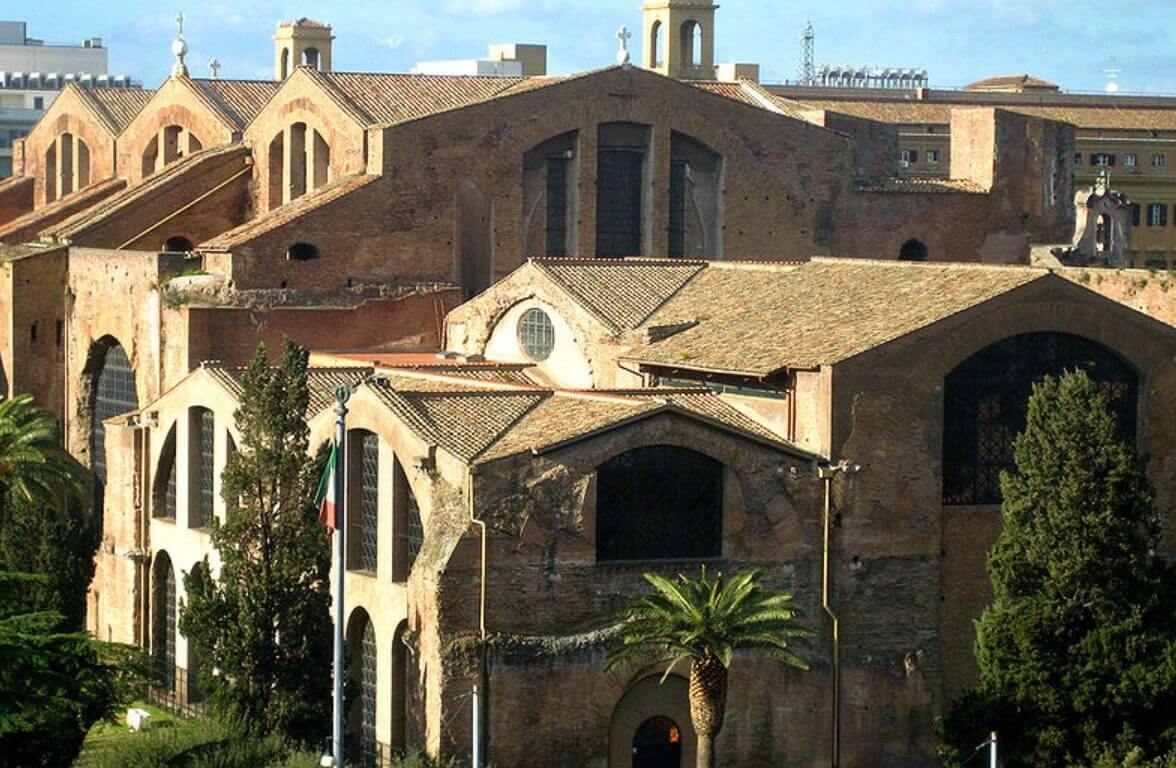
Your ticket will include a Baths of Diocletian map (a PDF if you book online) and will give you the layout of the site.
The Baths of Diocletian entrance is located on the Viale Enrico de Nicola, 00185 . Once you have got in, spend the time touring the baths first, which are simply stunning. You will then have time to take in the gardens and the more traditional museum displays.
- To get to the Baths of Diocletian location , take the Metro line A or B to Termini.
Baths of Diocletian Opening Hours
Baths of diocletian map.
Check out this map below of the awesome structure to help you plan your visit.

Do the Baths of Diocletian accept Roma Pass?
Good news for Roma Pass holders. The pass includes access to the Baths, and the other 3 attractions in the National Roman Museum Crypta Balbi, Palazzo Altemps –and Palazzo Massimo alle Terme.
Do the Baths of Diocletian accept the Rome City Pass?
Yes, the Rome City Pass also includes entry to the Baths and the three other National Roman Museum sites!
How to enter the Baths of Diocletian?
You can use your ticket bought online to enter the Diocletian Baths. Of course, if you do not have access to a computer you can also buy your tickets at the entrance. The Baths are located on Viale Enrico de Nicola, 00185 Roma.
How were the Baths of Diocletian named?
Commissioned by Maximian for his co-Emperor Diocletian, the baths were dedicated to Diocletian.
Who built the baths of Diocletian?
Maximian ordered the construction of the Baths of Diocletian; however, you can be sure he did not lift a finger. It is said that thousands of Christian slaves dies during the construction. As a result, the nearby Basilica of Santa Maria degli Angeli was constructed in their memory.
When were the baths of Diocletian built?
The baths were commissioned in 298 AD and took 8 years to be completed. They were an important part of the social fabric of the area and used for over 200 years.
The Baths of Diocletian are, in our opinion, a must-see. The ticket prices are really reasonable too, considering you can see the other sites of the National Roman Museum.
Once you have planned your trip here and secured your tickets online, it is time to sort out the rest of your trip. Check out some of the other great things to see and do in Rome in between visiting the National Roman Museum here . We’d love to know how you get on during your trip.
Fanny, an ardent admirer of ancient history and architecture, has been fascinated by the Colosseum since her first visit to Rome in 2012. As a key contributor to the Visit Colosseum Rome blog, she brings her passion for the Roman Empire’s monumental legacy to every article and guide.
Leave a Comment Cancel reply
Your email address will not be published. All fields are required.
© Visit Colosseum Rome I 2020

- Things to do
- Museums and Art Galleries
Baths of Diocletian
Commissioned by the Emperor Diocletian in 298 AD, the Baths of Diocletian had a capacity of over 3,000 people (twice as many as the Baths of Caracalla ). This bath complex was the largest of ancient Rome.
The construction of the Roman baths began in 298 and was completed in 306. The structure of the baths was very similar to that of the Baths of Caracalla. They were made of bricks, coated in marble and decorated with mosaics and sculptures . The whole complex took up 120,000 square meters and included a gymnasium, a library, and cold, hot and tepid public baths .
During the construction, thousands of Christian slaves died. Diocletian, ill and tired, abdicated in 305.
The Roman public baths remained open until 537, when the Goths cut off the aqueducts in an attempt to conquer Rome.
In 1561, Pope Pius IV ordered Michelangelo to build the Basilica of Santa Maria degli Angeli on the remains of the baths to honour all the Christian slaves who died.
National Museum of Rome
Open to the public after thirty years of reconstruction, the 10th Hall of the Baths of Diocletian were made part of the National Museum of Rome in 2008. Nowadays, only a small part can be visited , in which it is possible to see the high ceilings the baths had.
The interior of the remains includes an impressive funerary sculpture and two tombs decorated with frescoes and stucco, which are believed to date from the beginning of the second century AD.
In the outdoor part of the baths it is possible to stroll through a sixteenth century garden with nearly 400 works of art , including statues, sarcophagi and reliefs.
Impressive
Even though the ruins show only a small part of the public baths complex, it is extremely impressive . Visitors can also explore the tombs, which are very well preserved.
Visiting the Basilica of Santa Maria degli Angeli in Piazza della Repubblica , you can get an idea of the enormous size of the baths.
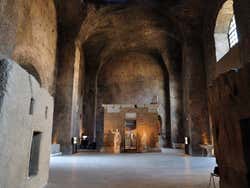
Viale Enrico de Nicola, 79.
Tuesday – Sunday: 9 am – 7:30 pm Monday: closed
Adults: € 13 ( US$ 13.90) EU citizens (ages 18 – 24): € 2 ( US$ 2.10) EU Citizens under 17 and Seniors (over 65): free entrance The entrance is valid for the four buildings of the National Roman Museum.
Metro station: Termini , lines A and B. Buses: C2, H, 36, 38, 40, 64, 86, 90, 92, 105, 170, 175, 217, 310, 360, 714 and 910.
Nearby places
Santa Maria degli Angeli e dei Martiri (146 m) National Roman Museum (231 m) Piazza della Repubblica (248 m) Rome Termini Railway Station (355 m) Santa Maria della Vittoria (402 m)
You may also be interested in
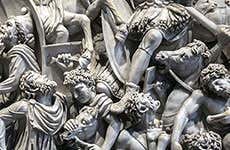
Palazzo Altemps
Erected during the fifteenth century by the Riario family and refurbished a century later under the orders of Cardinal Marco Sittico Altemps, the Palazzo Altemps opened in 1997 as part of the National Museum of Rome.
Crypta Balbi
As one of the four branches of the National Museum of Rome, the Crypta Balbi offers its visitors a historical trip through Rome’s past thanks to the excavations carried out on its site.
The Baths of Diocletian in Rome: how to visit + interesting facts
All you need to know about the Baths of Diocletian in Rome: what they are, what makes them significant and how to visit.
The Baths of Diocletian are a colossal ancient thermal complex in Rome’s city center.
Build by order of Emperor Diocletian in the III century AD, the baths were the bigger in the ancient world, at the time of construction, and they an impressive sight to see.
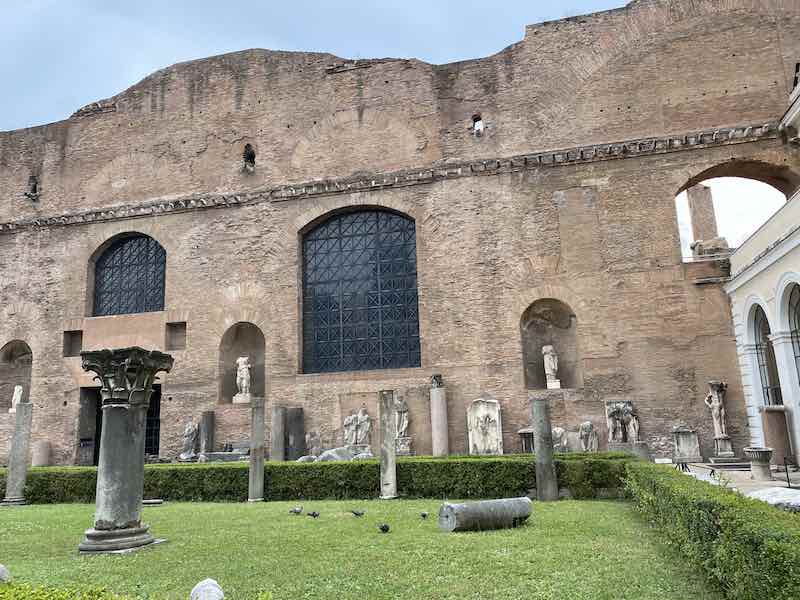
Over the centuries, the building operated as thermal baths, a church, a monastery, a storage area and a Planetarium.
Now, the Baths of Diocletian are one of the seats of the Roman National Museum and a stunning archaeological site in Rome .
Only relatively recently open to the public, the Baths are less visited than other monuments in Rome but they are so beautiful to deserve the lake of Rome hidden gem .
This is all you need to know to plan a visit.
Table of Contents
What are the Baths of Diocletian?
The Baths of Diocletian are a colossal thermal bath in Rome dating to the III century AD.
The construction lasted eight years, between 298 and 306 AD and take their name from Emperor Diocletian, during whose empire the baths got built and to whom they were dedicated.
Diocletian’s Baths are unique. They are among the biggest ancient thermal baths in the world and there are mostly intact.
When visiting, it is still possible to admire the giant vaulted ceilings of many of the chambers and it is possible to walk into the natatio , the ancient swimming area.
The baths occupy a surface of 13 hectares and they were able to hold up to 3000 people.
The baths stayed in use until the VI century and were then abandoned for about one thousand years.
Then, in 1561, Pope Pius IV decided to reuse the space and put Michelangelo in charge of turning them into a church and a monastery.
The church is called Santa Maria Degli Angeli e dei Martiri and it is still nowadays one of the most beautiful churches in Rome, for the mix of ancient spaces and Renaissance decor.
The church occupies what used to be the tepidarium and part of the natatio while the monastery occupied the northernmost part of the baths.
During a visit to the Baths of Diocletian, it is possible to visit the ancient baths and the cloisters of the monastery while the church is still in use and access is, therefore, free.
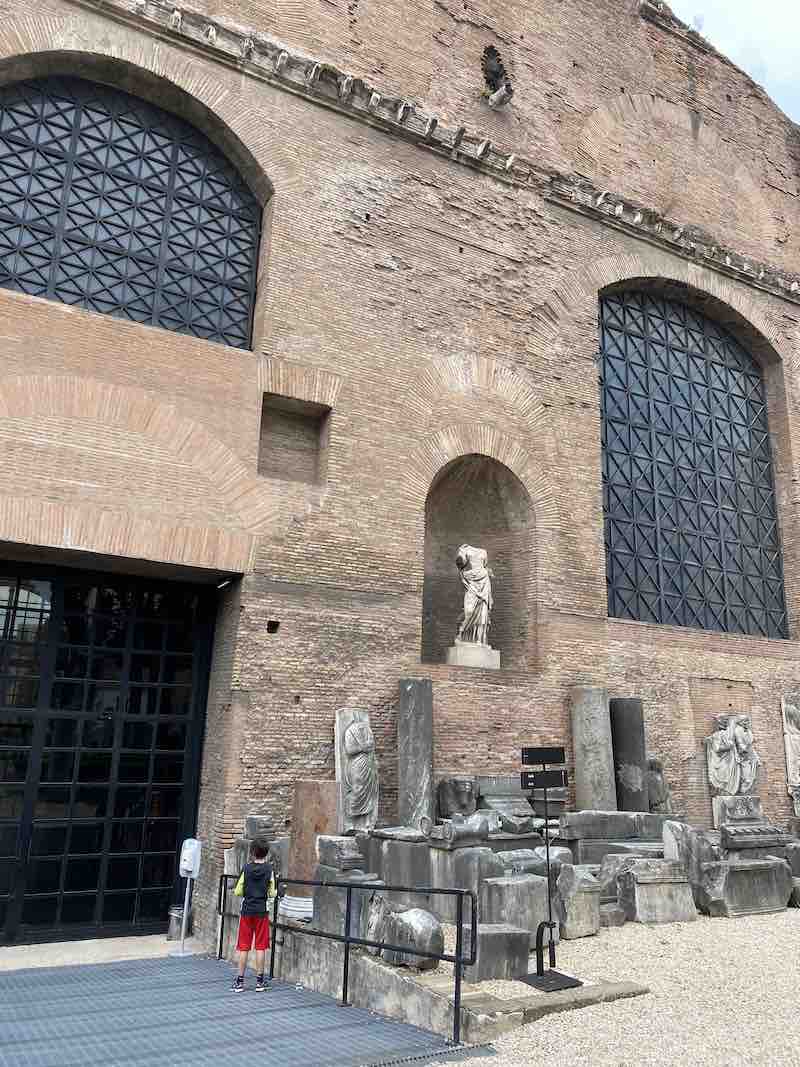
How to visit the Baths of Diocletian
Visiting the Baths of Diocletian is easy.
The site is part of the Roman National Museum and you can get tickets online from the >>> official website of the museum <<< Special discounts are available for holders of the MIC card (residents only).
At your own pace, the visit takes about 1 hour: it includes the museum’s area, which holds fascinating inscriptions, the cloisters of the monastery, that are now exhibition spaces of the museum, the front garden and several of the baths chambers.
Booking is recommended: in 2021 access is subject to temperature checks. A hand gel dispenser is at the entrance; the use of face masks is compulsory.
The Baths of Diocletian are in front of Termini Station and you can reach them by Metro A and B (Termini stop), metro stop Repubblica or any bus stopping at Termini.
The main entrance is just in front of the Termini station entrance, on the other side of the road, on Piazza dei Cinquecento.
What is it like to visit the Baths of Diocletian in Rome Italy
Visiting the Baths of Diocletian in Rome is a pleasant experience and a must-do for ancient history lovers.
On arrival, you first cross a pretty yard that opens onto the main ticket office and that you will have the chance to visit at the end of the tour.
Once inside, you encounter several areas that I find helpful to summarise as divided into four parts:
- The big cloister
The small cloister

The first area you encounter is the museum. This part of the Rome National Museum is devoted mainly to inscriptions and it is fascinating to visit.
Good info panels explain why and how inscriptions were used in Ancient Rome and while the explanations are not extensive, there are sufficient info panels to understand what you are seeing even without paying for a guide.
The museum develops indoors (please be advised that parts of it are closed in 2021 due to health reasons) and around the two Renaissance cloisters.
They are usually called Chiostro Grande (Big Cloister or also Michelangelo’s Cloister) and Chiostro Piccolo
Michelangelo’s cloister
Michelangelo’s Cloister is one of the biggest in Italy and was the main cloister area of the monastery.
The cloister is based on a design by the artist and built after his death between 1565 and1676.
The cloister has a large green area in the center with beautiful shrubs and a fountain.
It hosts several beautiful statues and an eye-catching tromp l’oeil by Filippo Balbi (1885), representing father Certosino Fercoldo with objects recalling the daily life of the monks in the monastery.
Worth noticing are also the cypress trees around the fountain, one of which is centuries old and called ‘Michelangelo’s cypress’ and the colossal statues of animals also preserved in the gardens.

The second cloister is much smaller and occupied part of the area that used to host the ancient natatio of Diocletian’s times.
The cloister has a well in its center and it is reminiscent of cloisters you may see in Florence and Tuscany, with pretty small columns and cream coloured walls.
The small cloister hosts interesting documents about Rome’s ancient religion beautifully displayed and explained and used to host marbles from the Ludovisi collection, now moved to Palazzo Altemps, another seat of the museum.
These marbles are the reason why the cloistered is often referred to as the Ludovisi Cloister.

The baths of Diocletian as we see them today
The Baths of Diocletian used to occupy a vast area comprising the baths themselves with the hot, lukewarm and cold pools, as well as many common areas for study and exercise.
Where we now see Piazza della Repubblica, there used to be two exedras with libraries and two circular gyms, one of which is still largely visible.
The central part of the baths had the three bathing areas typical of the Roman thermal tradition, the calidarium , the tepidarium and the frigidarium , as well as the colossal natatio that are breathtaking.
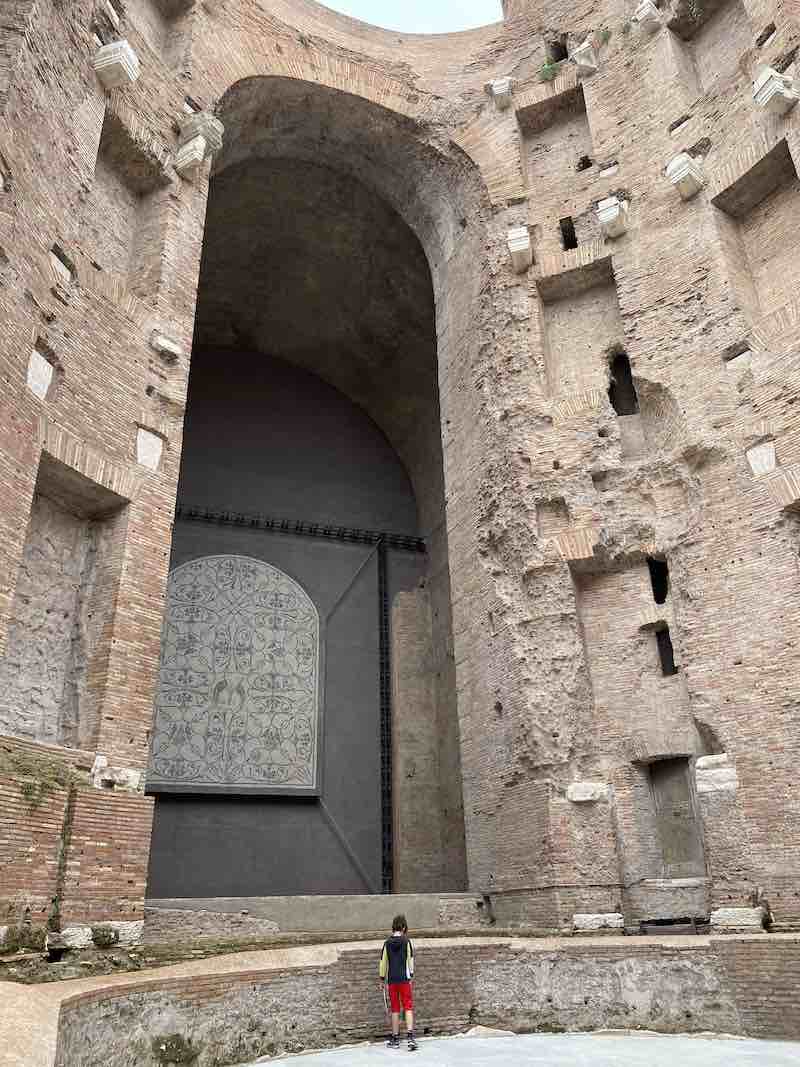
During the visit to Diocletian’s baths, we can still appreciate some of these structures and in particular Aula X, aula XI.
Aula X used to one of the colossal entrances to the baths. It is a vast and excellently preserved room that now hosts the remarkable sepulchral monument to the Platorini, found along the river Tiber.
The room is stunning: here, you can appreciate the size of the building and marvel at its incredible, still standing, vaulted ceilings.
Aula XI is beside Aula X and now hosts a beautiful mosaic. It is not clear what use this room would have had in ancient times however, there is a hypothesis that it may have been a changing room.
Aula VIII now hosts several decor items from the thermal complex and used to open on the large natatio . This area would have looked like scenes from a theatrical backdrop, cladded with colorful marbles reflecting into the water and decorated with statues.
While we cannot fully appreciate what it would have looked like, it is still possible to admire the size and ambition of the project walking along the Aula and the natatio.
For reference, if you are familiar with other baths in Rome, this facade alone would have been twice as big as that of Caracalla’s Baths .
The walk along the natatio is very impressive and, in my opinion, the highlight of this visit.
Aula Ottagona : Aula Ottagona aka Octagonal Room was a large space with an interesting history: used as a storage area for grain in the XVII century, it was then turned into a planetarium, then dismantled in 1987.
Access to this room was not allowed at the time of our visit but you can appreciate its size and structure from the outside.
Visiting the Baths of Diocletian with kids
I have visited the Baths of Diocletian with my two children and found the baths to be kid-friendly.
While there is nothing in the museum for them (no interactive exhibitions of kids’ guide books), the explanation about the use of inscriptions and the tools used were interesting for primary school age kids and the areas of the museum varies and easy enough to explore to keep them entertained.
I recommend you bring paper and pencil and make use of the several seats available to have them interact with the items displayed.
The big cloister was one of my children’s favorite stops, especially for the presence of the colossal statues of animals, and the natatio was a highlight too for its size, for being outdoors and for the excitement of walking where there would have been water.
The museum is stroller friendly.
What to carry with you when visiting the Baths of Diocletian
When visiting the Baths of Diocletian, I recommend you bring:
- Confirmation of your booking (on your phone or printed out)
- Good walking shoes – while the area doesn’t pose big mobility issues, part of the floor is uneven so good walking shoes are recommended. You can find my recommendations on the best shoes for Rome here.
Please note: there is no cafe/restaurant in the museum but the area has plenty of options. I recommend you make a food stop before or after the visit: food is not allowed inside the museum.
The museum does have good restrooms.
What to see near the Baths of Diocletian
A visit to the Baths of Diocletian must be combined with a visit to Santa Maria Degli Angeli e dei Martiri.
The church is inside the complex but you access it from a different entrance and you do not need a ticket for it.
Access is from Piazza delle Repubblica, just around the corner from the entrance to the museum, only a couple of minutes’ walk from it.
Nearby, you will also have stunning Palazzo Massimo, another seat of the Roman National Museum, the beautiful Monti District and, down Via Nazionale, Piazza Venezia with Vittoriano Monument and the Capitoline Hill.
Where to stay near Diocletian’s Baths
The baths of Diocletian are in front of Rome’s Termini station. I therefore recommend you check out our guide to the best hotels near Termini to find the best accommodation in the area.
Frequently Asked Questions about the Baths of Diocletian
The baths of Diocletian are a colossal ancient Roman thermal complex in Rome city center. They are the biggest thermal complex of the ancient world and they date to the III century AD
The Baths of Diocletian were built by Emperor Massimiano who dedicated them to Emperor Diocletian, with whom he shared power. The inscription that used to stand at the entrance to the baths declared the baths to be build in honour of Diocletian, for the citizens of Rome.
The Baths of Diocletian were built between 286 and 306 AD
The Baths of Diocletian are in Rome city center. They extend over a large area between the modern landmarks of Termini Station, Piazza Esedra (Piazza della Repubblica) and via Volturno.
The baths of Diocletian were a large recreational space for hygiene, health and socialisation purposes. Like all thermal complexes in the Roman world, they were a place where Romans could bathe and exercise but they were also large recreation areas for study, business and social interaction. The baths were open to all Romans, regardless of wealth.
Parts of the Baths of Diocletian in Rome are intact however, the baths went through huge changes during the course of the centuries that altered their original structure. The most noticeable and valuable is the transformation of the baths into a church and monastery by Michelangelo. While it is still possible to appreciate part of the baths as they used to be, this intervention has, more than others, changed the appearance of the baths to a large extent.
I hope you enjoyed this overview of our visit to the Baths of Diocletian and it made you want to plan a visit. Safe travel planning!
My name is Marta, I am a travel-loving mama born and bred in that messy, wonderful, infuriating, awe-inspiring unbelievably beautiful city that is Rome. A classics graduate and professional travel blogger, on this site I share my insider tips to help you plan your dream trip to Rome, Italy.
Visiting Trastevere: how to enjoy one of Rome’s most scenic districts
Rome symbols you need to know: from ancient to modern times, you may also like, best things to do with kids in rome..., the 29th of june in rome: what you..., villa borghese gardens: how to visit, best things..., outdoor swimming pools in rome you’ll love this..., how to see rome in two days: perfect..., fun and interesting facts about the colosseum for..., christmas markets in rome you will love this..., how to see the best of rome in..., free things to do in rome you’ll love..., how to buy tickets for the pantheon +..., privacy overview.
- The Project
- What is Museo per tutti
- Bene FAI per tutti
- Accessibility of Museums
- The accessible guide
- Staff and method
- How to join Museo per tutti
- Museums List
- Museums Map
- Forthcoming Museums
- Temporary exhibitions
The National Roman Museum – Baths of Diocletian
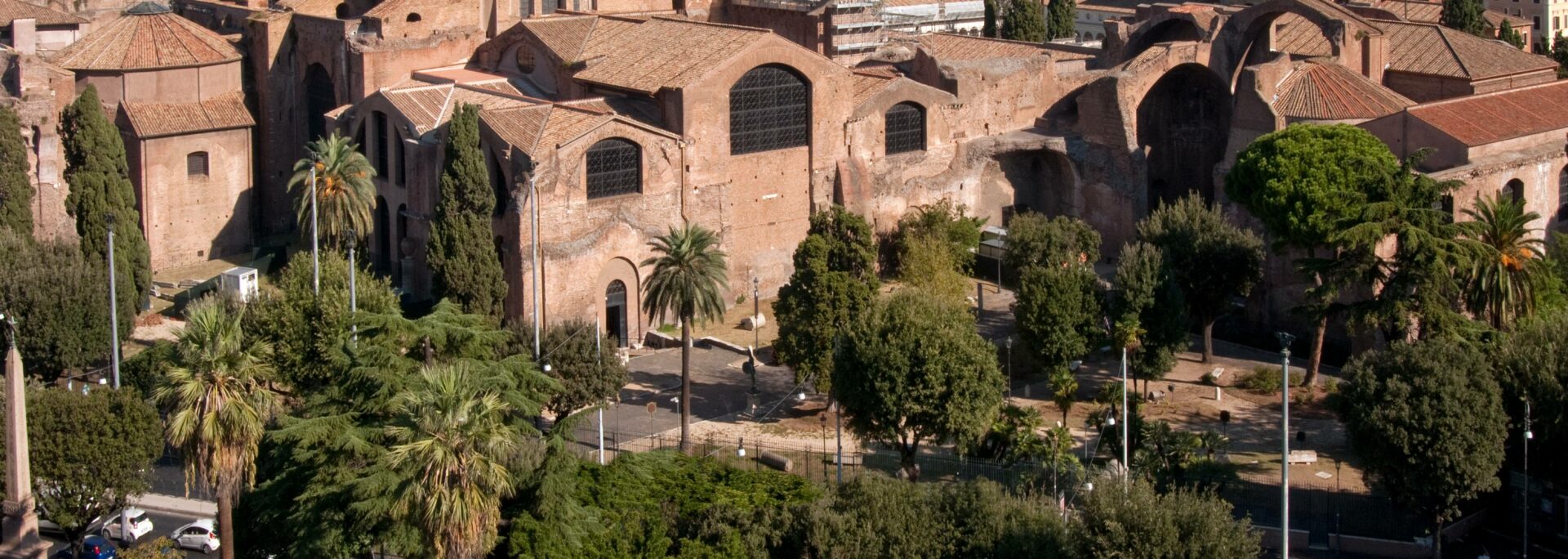
The Baths of Diocletian are a unique monumental complex for the dimension and perfect state of maintenance of the building that is the result of the mix between the cultures of the ancient Rome and Renaissance. People built them in just 8 years – between 298 and 306 b.C. wanted by Emperor Massimiano, who dedicated them to Diocletian, the other emperor with whom he shared the power – in the area between the hills Viminale and Quirinale. Here the complex was structured according to the common scheme of the Roman Baths (the main rooms of the Baths trail are around the central axis) and could host 3000 people.
The complex changes in 1561 thanks to pope Pio IV, after having been abandoned for around 1000 years, and becomes a church and a charterhouse designed by the famous Michelangelo. The church was dedicated to the Lady of angels and Christian martyrs, remembering the several Christians who died during the building of the Baths according to tradition.
Nowadays, this place is one of the branches of the National Roman Museum that hosts, together with the Baths and the cloisters of Renaissance time, the Museum of Written Communication in Roman World and the Museum of the Protohistory of the Latin Peoples and rests and artworks excavated from 1870 in the area of Rome and sorroundings.
According to the mission of the National Roman Museum of divulging the history and culture of the ancient Romans, the visitor with intellective disability can discover this world at the Baths of Diocletian through the exhibited artworks and the architecture of the building.
The visit takes place in huge areas through a wide setting where artworks are distanced and spread along the path, in the best context facilitating concentration. In the guide there are also 3d reconstructions of the areas to explain the changing of appearance between the present and pastime, so that it is easier to understand the contenents and facilitate the connection of the places with the old functions. Also the visit in the cloisters is structured in the same way: the space is wide and outdoors, full of statues to discover.
The trail finishes with the two museums of the Written Communication in Roman World and the one of the Protohistory of the Latin Peoples, whose artworks are well illuminated in showcases in big rooms and with no risks of overcrowding or background noises. Considering the purpose of narrating the ancient Rome culture, the artworks described are groups of objects that nowadays talk about customs and tradition, like the war or the aristocrazy.
There are elements for orienting both in the guide of the Baths and the museums, like the number of the rooms or writings for the exhibition.

- Guida completa in Easy to Read Download
- Istruzioni e indice in Easy to Read Download
- Guida sociale in Easy to Read Download
- Mappe in Easy to Read Download
- Il museo e le opere in Easy to Read Download
- Guida completa in CAA Download
- Istruzioni e indice in CAA Download
- Guida sociale in CAA Download
- Il museo e le opere in CAA Download
Contact the museum before your visit

Lorem ipsum dolor sit amet, consectetur adipisicing elit. Ut minus, quo veniam tempore voluptates nesciunt a recusandae? Nulla impedit, maxime repellendus soluta laboriosam sint est saepe sit nihil consequatur ut.Lorem ipsum dolor sit amet, consectetur adipisicing elit. Ut minus, quo veniam tempore voluptates nesciunt a recusandae? Nulla impedit, maxime repellendus soluta laboriosam sint est saepe sit nihil consequatur ut.

You are using an outdated browser. Please upgrade your browser .

- Baths of Diocletian and the National Roman Museum
- Rome Museums
- 3 hours tour
- Groups Allowed
- Individual Tour
- Skip-the-Line Access
View on map
Description
Tour of the nationale roman museum.
Check out the National Roman Museum tour in the surviving structures of the monumental complex of the Baths of Diocletian!
National Roman Museum
The tour of the National Roman Museum begins to the Baths of Diocletian , wonderful and suggestive thermal complex built between 298-306 AD, the largest spa of the Roman Era, extended for about 13 hectares and able to accomodate about 3000 people. We will start the tour with the central area of the baths (the calidarium, tepidarium and frigidarium and the natatio), transformed by Michelangelo in the Basilica of Santa Maria degli Angeli , between 1561 and 1566. In 1889, the entire archeological complex has been transformed in an archeological museum, which hosts the Epigraphic Museum , the Protohistoric Museum and the Virtual Museum of Ancient Via Flaminia. We will start the tour of the National Roman Museum in the Giardino dei Cinquecento, which houses funerary artifacts, altars, stele and inscribed tombstones, made of marble and travertine. We will proceed to the Museo Epigrafico and the educational section, dedicated to the mediums and techniques used for inscribing in antiquity, alphabetic systems, both Greek and Latin, following the evolution taking place from antiquity until the 5th century AD. Ascending to the upper balcony, the itinerary continues with the studying of the plethora of epigraphic inscriptions, identifying the different professional bodies and trades that existed in ancient Rome, recounting of gladiatorial victories, and the touching words used to express the loss of the families. We will continue the tour of the National Roman Museum with a section of a religious nature, the Jewish culture in Rome, and the symbols initially used by the early Christians. One of the most interesting sections of the visit will be the one dedicated to the practice of magic in ancient Rome, thanks to the exposure of artifacts at the Fonte di Anna Perenna. Finally, the guided tour will lead us to examine a number of artifacts related to Mithraism and other popular cults in the Rome of the late Empire. Moving on, the tour will continue to the Protohistoric Museum, which contains artifacts of the culture of ancient Latium between XI and VII century BC, obtained from some prehistoric necropolises around Rome and from the Forum. Going down the staircase, we will emerge in the Chiostro of Michelangelo, with its 100 meter long sides, where hundreds of marble works of the Imperial era are displayed. Coming back, we will visit the small Chiostro (cloister in english), recently re-opened to the public, with a new section being prepared for the inauguration for the bimillenium of the death of Augustus Caesar in 2014, together with the monumental façade of the natatio and the large adjacent chambers. We will be able to observe its spectacular 3D reconstruction in a movie which is screened in a room that also houses the model of the entire spa complex. Iside the gigantic chamber nearby, we will come across the reconstruction of the Sepolchro c. d. dei Platorini, discovered in 1880 near the Ponte Sisto during the construction of the embankments of the Lungotevere, dismantled and then rebuilt here. Among the large mosaics which will finally attract our attention is one that depicts a skeleton lying on its side with a finger pointing to the Greek inscription “know thyself”.
Privacy Setting
This website uses cookies to improve your experience while you navigate through the website. View the Cookie Policy View the Personal Data Policy
Google Maps è un servizio di visualizzazione di mappe gestito da Google Ireland Limited. Questo servizio serve ad integrare tali contenuti all’interno delle proprie pagine.
Luogo del trattamento: Irlanda - Privacy Policy
Il pulsante “Mi Piace” e i widget sociali di Facebook servono per interagire con il social network Facebook e sono forniti da Facebook Ireland Ltd.
Google Fonts è un servizio per visualizzare gli stili dei caratteri di scrittura gestito da Google Ireland Limited e serve ad integrare tali contenuti all’interno delle proprie pagine.


National Roman Museum and Diocletian Thermal Baths Guided Tour
If you’re a history enthusiast visiting Rome, a visit to the National Roman Museum–Palazzo Massimo alle Terme is an absolute must. Boasting one of the world’s most important collections of classical art, it’s best explored alongside an expert guide. We offer a private or small-group 2-hour tour of the museum, which includes skip-the-line entry, so you won’t have to worry about wasting time waiting in long queues.
Our knowledgeable guide will take you through the museum, highlighting the most impressive and notable pieces on display. Admire the perfectly preserved mosaics, ancient coins, jewels, and notable sculptures, including the ‘Boxer at Rest’ , the ‘ Discus Thrower’ , and the ‘ Sleeping Hermaphrodite’ . See the extravagantly decorated rooms that once belonged to Empress Livia and gain a comprehensive overview of classic Roman art’s rich panorama.
Upgrade your tour to include a 1-hour visit to the Baths of Diocletian, which is a perfect addition to your experience. You’ll proceed to what was once the most luxurious public bath in Rome. Here, you’ll immerse yourself in the sacred atmosphere of Basilica of St. Mary of the Angels, which was incorporated into the bathhouse by Michelangelo in 1561. Learn about Roman social traditions, and see how the ancient Romans used to relax and enjoy themselves.
Our tour begins at the National Roman Museum–Palazzo Massimo alle Terme ticket office, located just a few steps away from Republic Square. Here, you’ll meet your guide, collect your skip-the-line ticket, and bypass the lines that snake around the museum’s entrance.
Book your tour now to enjoy a unique and enriching experience that will leave you with a comprehensive overview of classic Roman art’s rich panorama.
- Private or small-group 2-hour tour of the National Roman Museum with skip-the-line entry.
- Admire collection highlights including the ‘Boxer at Rest’, the ‘Discus Thrower’, and the ‘Sleeping Hermaphrodite’.
- Upgrade your tour to include a 1-hour visit to the Baths of Diocletian.
- Learn about Roman social traditions and how the ancient Romans used to relax and enjoy themselves.
- Immerse yourself in the sacred atmosphere of Basilica of St. Mary of the Angels, incorporated into the bathhouse by Michelangelo in 1561.
- Resort pick-up and drop-off.
For a full refund, you must cancel at least 24 hours before the experience’s start time.
These were the greatest baths of antiquity and constitute evidence of the high degree of refinement of the Romans of that period. More than 3,000 bathers could be accomodated at one time in this huge establishment, built by Maximian and Diocletian (298-306 A. D.). Today, we see the Church of Santa Maria degli Angeli, and the Museo Nazionale (or delle Terme) on the site of the ancient ruins.
CHURCH OF SANTA MARIA DEGLI ANGELI
It was built in 1561, by Michelangelo, who transformed one of the great halls of the Baths (the ancient Tepidarium) into a church. In 1749, Luigi Vanvitelli remodeled the structure. Currently, it is used for official religious ceremonies.
Interior: Crossing the vestibule (the ancient Calidarium), we enter the church, which at the transept is 91 meters long, 27 meters wide, and 28 meters high. Of the 16 enormous columns, 8, of Egyptian granite, are ancient. I In this church, are numerous monuments and tombs of famous people. To the left, the tomb of the Neapolitan poet and painter of the 1600’s Salvator Rosa; to the right, the tomb of the painter Carlo Maratta (d. 1713), and one of his most significant works, the Baptism of Christ. In the right corridor to the transept, the statue of St. Brunone by G. Anthony Houdon (1766), about | which Pope Clement XIV used to say: « He would speak, if the rules of his i Order did not forbid it ». A sundial, on the pavement to the right, is by Francesco Bianchini and Giacomo Maraldi (1702). Noteworthy among the I paintings is the « Saint Jerome surrounded by Saints » by Girolamo Muziano, an artist whose works were esteemed by Michelangelo. The tomb of Marshal Armando Diaz (d. 1928) is also to be seen. A fine painting by Domenichino, « The Martyrdom of Saint Sebastian » is to the right of the main altar, and I to the left, « The Punishment of Ananias and Sapphira » by Pomarancio. Behind the main altar, the sepulchre of Pius IV attributed to Michelangelo.
THE NATIONAL MUSEUM OR MUSEUM DELLE TERME
It is to the right of Santa Maria degli Angeli. Inaugurated in 1889, it comprises an important collection of Greek, Roman, and Christian art. At the beginninq of this century, the museum was enriched by the Ludovisi bequest.

The Baths of Diocletian in Rome
Once the largest thermal complex in ancient Rome, the Baths of Diocletian have beautifully survived the test of centuries.
They now comprise the Museum of the Baths of Diocletian – one of the 4 locations of the National Roman Museum – as well as the basilica of Santa Maria degli Angeli e dei Martiri.
More confidential than many of the ancient sites of the Italian capital, the Baths of Diocletian are nevertheless worth a visit if you’re staying long enough in the Eternal City.
👌 Handy tip: The Roma Pass gets you a discount at the Baths of Diocletian and offers skip-the-line access to numerous city monuments along with unlimited public transport . It’s an excellent option to avoid the hassle of long lines!
💡 The Captain’s tip 💡
🧐 Want to know more about the history of Rome? Captain Ulysses highly recommends this free guided tour of the city (in English) . It’s up to you to choose how much you wish to tip the tour guide!
💤 Are you looking for a hotel in Rome? Be sure to check out the Captain’s article: Where to stay in Rome? Advice & recommendations
🏛 Are you planning your stay in Rome? Check out Captain Ulysses’ detailed article on the best things to do in the city: A Guide to Rome
👶 Planning a family adventure to Rome? Discover all of the Captain’s top tips in the article: Exploring Rome with the Kids: Family-Friendly Activities .
Brief history of the Baths of Diocletian
The origins of the baths of diocletian.
The Baths of Diocletian were built between 298 and 305 AD, under the reign of Maximian, co-emperor of Diocletian (Maximian controled the West of the Empire, Diocletian the East).
The Baths of Diocletian were inspired from the Baths of Caracalla but were twice as large. They extended over no less than 14 hectares / 35 acres, and remained the largest spa complex ever built under ancient Rome.
According to Roman custom, the baths included a caldarium (a hot room), a tepidarium (a warm room), a frigidarium (a cold room), as well as a natatio (a swimming pool), not to mention a library and vast gardens. The thermal baths were supplied with water by one of the city’s many aqueducts.
The decline of the Baths of Diocletian
The Baths of Diocletian remained in activity for over three centuries. In the 6th century AD, the Goth invaders cut off the Roman aqueducts and the thermal baths of the Italian capital fell into disuse.
Like many ancient sites, the Baths of Diocletian were used as a quarry whose materials were looted and reused for new constructions.
The Basilica of Santa Maria degli Angeli e dei Martiri
In the 16 th century, at the request of Pope Pius IV, Michelangelo converted part of the old Roman baths into a basilica.
Dedicated to the Christian martyrs who worked on the construction of the thermal baths some 12 centuries earlier, the basilica is located in the former frigidarium (cold room), tepidarium (warm room) and natatio (swimming pool) of the thermal baths.
The Baths of Diocletian and the National Roman Museum
In 1899, the National Roman Museum moved into the Baths of Diocletian. The museum aimed to bring together ancient works and sculptures discovered in the Italian capital and its surroundings.
The collections were enriched over the years to such an extent that the Baths of Diocletian became too cramped to store and exhibit all the collections of the National Roman Museum.
The National Roman Museum’s collections were therefore divided and are exhibited today in 4 different locations: the Baths of Diocletian, the Palazzo Altemps , the Palazzo Massimo alle Terme and the Crypta Balbi.

🚃 Termini Station 🚃
The water that supplied the thermal baths during Antiquity was stored in a vast reservoir called the “ botte di Termini ”. The was destroyed in the second half of the 19 th century to make room for the construction of the famous Termini station, which is therefore named after this ancient reservoir.
Visiting the Baths of Diocletian
Today, the Baths of Diocletian comprise two sites:
- The Museum of the Baths of Diocletian (Museo nazionale delle Terme)
- The Basilica of Santa Maria degli Angeli e dei Martiri (Basilica of Saint Mary of the Angels)
The Museum of the Baths of Diocletian
Visitors can discover the remains of the impressive thermal complex (in particular the apodyterium (the changing room) and the atrium), as well as a beautiful collection of statues and ancient works of art.
The museum’s cloister – attributed to Michelangelo – is an absolute gem!

The Basilica of Santa Maria degli Angeli e dei Martiri still displays many of the original architectural elements of the Baths of Diocletian.
The Basilica is also home to the Meridian of Bianchini, an astronomical meridian line dating from the 18 th century. More or less similar to a sundial, it measures solar elevation and time of year.

Getting to the Baths of Diocletian
The Baths of Diocletian are located a stone’s throw from Piazza della Repubblica and Termini station, served by metro lines A and B as well as numerous bus lines.
Unlimited access to public transport is included in the Roma Pass and Omnia Card.
👉 More info: Roma Pass / Omnia Card
Opening hours of the Baths of Diocletian
The Baths of Diocletian are open from Tuesday to Friday from 2 to 7.45 p.m., as well as on weekends from 10.30 a.m. to 7.45 p.m.
Admission tickets to the Baths of Diocletian
Admission tickets are €13 at full price, €2 for European nationals aged 18 to 25 and free for European nationals under 17 and over 65. The admission ticket also provides access to the other three locations of the National Roman Museum: Palazzo Altemps, Palazzo Massimo alle Terme and Crypta Balbi.
FYI, The Roma Pass gets you a discount at the Baths of Diocletian and offers skip-the-line access to numerous city monuments along with unlimited public transport.
👉 More info: Roma Pass
👉 Skip the lines: book your tickets and visits in Rome!
👉 looking for a hotel in rome, 👉 looking for tips and recommendations here are all the captain’s suggestions.
🛏️ Accommodation : to book your accommodation in Rome, Captain Ulysses warmly recommends Booking : – the best hostels – the best affordable hotels – the best mid-range hotels – the best high-end hotels
🎟️ Activities: as for booking visits and tourist activities, Captain Ulysses recommends three websites: GetYourGuide , Tiqets and Civitatis . Guided tours, cruises, skip-the-line tickets, tourist activities… there’s plenty to choose from!
🎫 Citypass: if you are staying in Rome for several days, it may be worth investing in the Roma Pass or the Omnia Card . As well as entry to some of the capital’s most iconic sites, these passes include access to public transport.
🚐 Transfers: if you want to arrive in Rome serenely, you can book your transfer from the airport to the city centre in advance. A car will be waiting to take you to your accommodation in the city. For more information: transfers in Rome .
🚌 Local transport: Rome has a comprehensive public transport system: metro, bus and tram. Access to public transport is included in the Roma Pass and the Omnia Card . If you wish, you can also opt for a hop-on hop-off bus tour which stops at all the top tourist attractions in Rome (audio guide included).
✈️ Flights and trains: to book your flights to Rome, Captain Ulysses warmly recommends Skyscanner . You’ll be able to compare countless offers to find the best deal. If your dates are flexible, you can also compare prices over several months to find the cheapest flights possible. For flights as well as trains and buses, the Captain recommends Omio .
Credits michael kooiman | Hannah Becker | michael kooiman | Carole Raddato | telwink
How useful was this post?
Click on a star to rate it!
Average rating 0 / 5. Vote count: 0
No votes so far! Be the first to rate this post.
As you found this post useful...
Follow us on social media!
Related posts


Shakespeare’s Globe in London

Street Art In The 13th Arrondissement Of Paris

Where to eat in Bruges? The Captain’s top recommendations
Leave a reply cancel reply.
Your email address will not be published. Required fields are marked *
Save my name, email, and website in this browser for the next time I comment.
Privacy Overview
- TAXI FARES CALCULATOR
- BOOK PRIVATE TOUR
- Hotels with Best Views
- Hotels near Termini
- Hotels near the Colloseum
- 3 Star Hotels
- 4 Star Hotels
- 5 Star Hotels
- Apartments For Rent
- Best Hostels
- Fiumicino Airport
- Ciampino Airport
- Termini Railway Station
- To Florence
- To Ostia Antica
- Famous Roman Dishes
- Best Pizza Places
- Best Pasta Places
- Local Italian Food
- Best Gelato Places
- Best Rooftop Bars
- Sistine Chapel
- Vatican Museums
- Borghese Gallery
- Roman Forum
- Trevi Fountain
- Spanish Steps
- Castel Sant’Angelo
- Navona Square
- Ancient Sites and Ruins
- Galleries and Museums
- Parks and Gardens
- Squares and Fountains
- Beaches near Rome
- To Alberobello
- How to Choose a Hotel in Rome
- 2025 Pilgrims of Hope Jubilee
- Rainy Days in Rome
- What to See in 3 days
- Buying a Sim Card in Italy
- Tickets to Vatican museums
- Renting a Car in Rome
- Apps for Tourists
- Souvenirs from Rome
- Free Things to Do
- Unusual Things to do
- Public Transport
- Campo Marzio
- Jewish Ghetto Quarters
- Quartiere Coppedè
- Sant’Eustachio
- Marcus Aurelius
- Gaius Julius Caesar
- Octavian Augustus
- Italian food and wine
- Sightseeing Tour at Sunrise
- Sightseeing Tour by Car
- St Peter’s Basilica
- Colosseum & Roman Forum
Roman Thermal Baths of Diocletian
Written by: Kate Zusmann
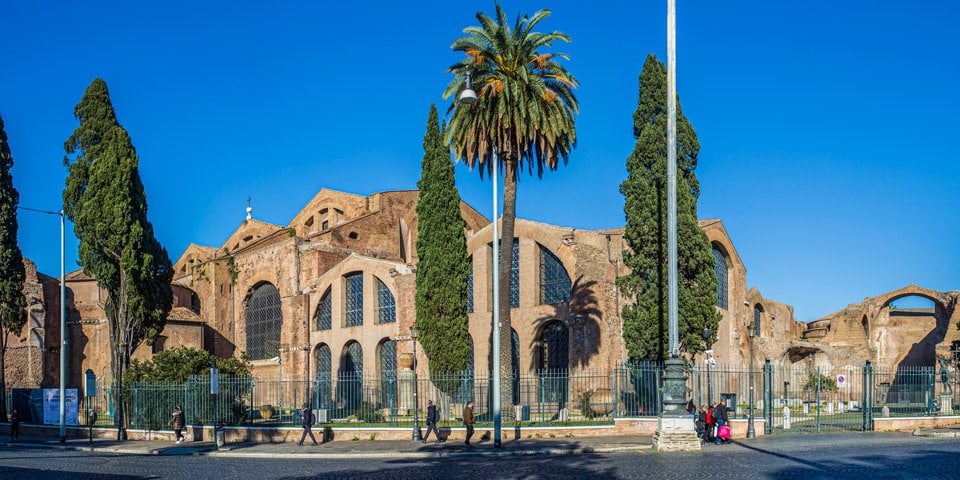
The Baths of Diocletian, known as “Terme di Diocleziano” in Italian, were ancient public baths built in ancient Rome during the reign of the Roman Emperor Diocletian in the 4th century AD.
They were the largest and grandest of the public baths in Rome, capable of accommodating up to 3,000 bathers at once, and served as an essential social and recreational center for the citizens of Rome. Today, the remains of the Baths of Diocletian house the National Roman Museum, showcasing a vast collection of Roman antiquities.
Guided Tour to Baths of Diocletian and National Roman Museum
If you’re a lover of the history of Ancient Rome and are looking for an engaging and comfortable way to immerse yourself in its rich past, I highly recommend a tour with a professional guide. This half-day guided tour of the Baths of Diocletian and the National Roman Museum offers just that.
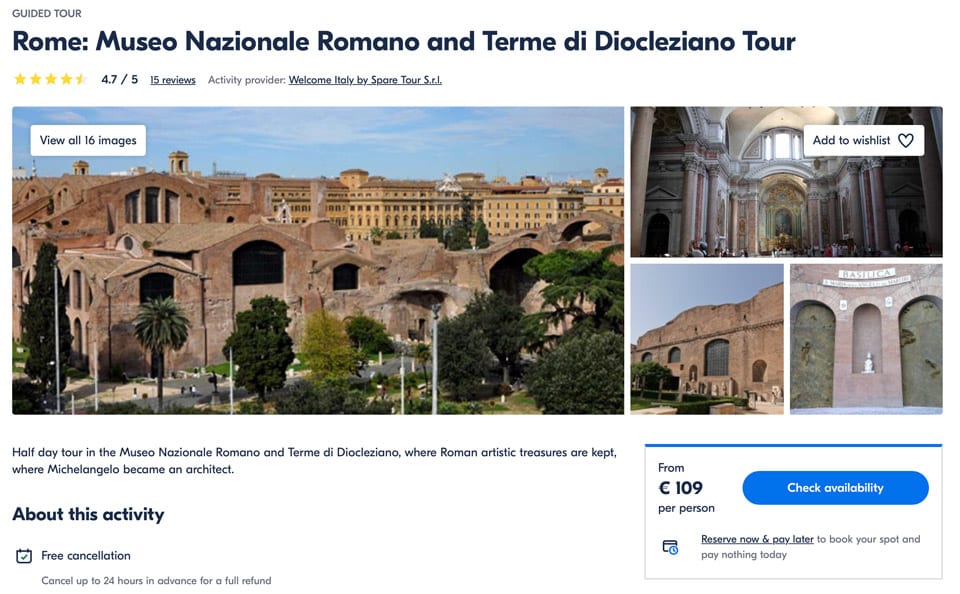
In 3 hours, you’ll explore some of Rome’s lesser-known but equally captivating treasures away from the tourist crowds. You’ll have the chance to walk through the ancient Baths of Diocletian, complete with a courtyard restored by Michelangelo, and visit the Basilica di Santa Maria degli Angeli to marvel at a unique 17th-century planetary sundial. An expert guide will introduce you to rare art pieces like Myron’s Discobolus and the Old Boxer.
The package includes entrance tickets, a professional guided tour, and even hotel pick-up if you’re staying in the city center. Remember that this specialized tour is only available on weekends and must be booked online several weeks in advance.
History of the Baths of Diocletian
The Baths of Diocletian, or “Thermae Diocletiani” in Latin, were among ancient Rome’s grandest and most magnificent public bath complexes. The construction of the baths began during the reign of the Roman Emperor Diocletian in the early 3rd century AD and was completed around 306 AD, after his abdication. Diocletian was known for his interest in public works, and these baths were part of his ambitious building projects that aimed to showcase his power and wealth.
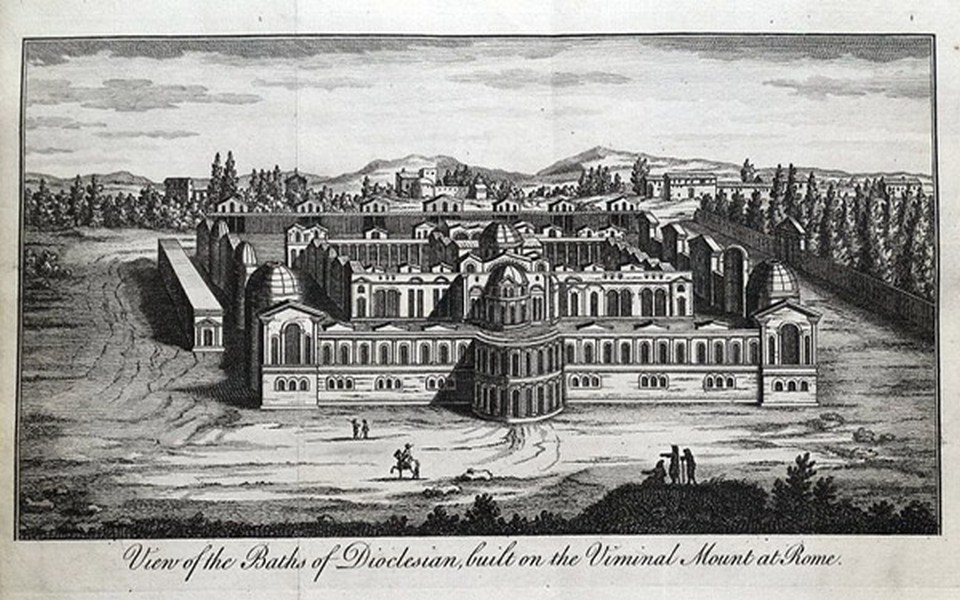
The Baths of Diocletian were the most extensive public baths in ancient Rome, covering an immense area of approximately 13 hectares (32 acres). They were designed to accommodate thousands of bathers simultaneously and provide various services and amenities for the citizens of Rome. The vast complex featured multiple bathing rooms, hot and cold water pools, saunas, gymnasiums, and other facilities for relaxation and recreation.
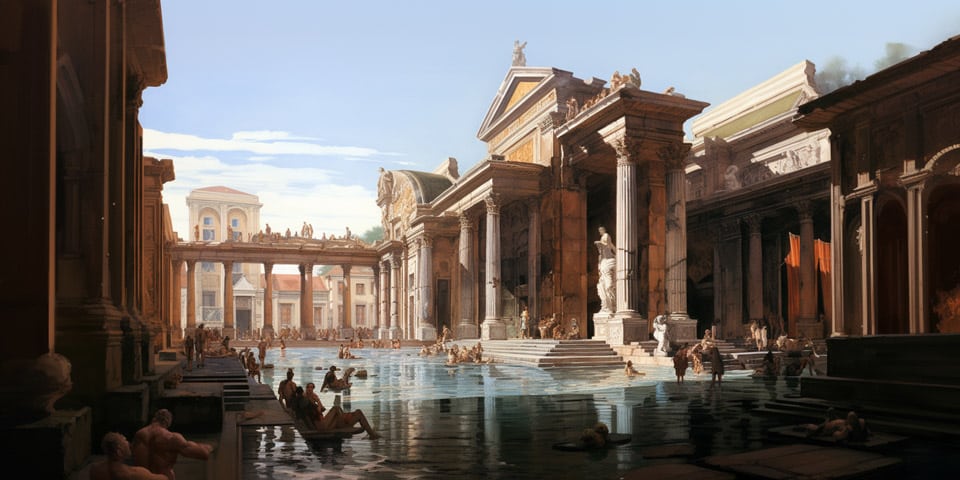
The Baths of Diocletian was a place for bathing and a multifunctional social and cultural center. The complex housed libraries, art galleries, lecture halls, and other spaces where Romans could gather, socialize, and engage in intellectual pursuits. The vast central hall, known as the “frigidarium,” was an awe-inspiring space with massive vaulted ceilings and colossal columns designed to impress and reflect the grandeur of the Roman Empire.
Baths of Diocletian Reconstruction
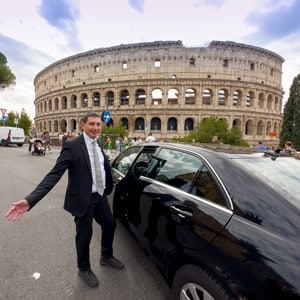
Fix price transfer from the Fiumicino Airport to Rome
The Baths of Diocletian, an ancient Roman complex, have undergone significant reconstruction and repurposing over the centuries. After their decline following the fall of the Roman Empire, parts of the baths were converted into the Basilica of Santa Maria degli Angeli e dei Martiri in the 16th century, designed by Michelangelo.
This remarkable transformation incorporated the ruins of the ancient baths into the new church, preserving their historical significance while repurposing the site for Christian worship. Today, the Baths of Diocletian are an essential part of the National Roman Museum, providing visitors with a unique opportunity to explore the remains of this once-magnificent complex and witness the ingenious incorporation of ancient Roman ruins into Renaissance architecture.
National Roman Museum
Today, the Baths of Diocletian are essential to the National Roman Museum in Rome. Visitors can explore the remnants of this once-magnificent complex, witness the grandeur of Roman engineering, and appreciate the historical significance of this ancient public space. The Baths of Diocletian stand as a testament to the remarkable achievements of ancient Rome and continue attracting tourists and history enthusiasts worldwide.
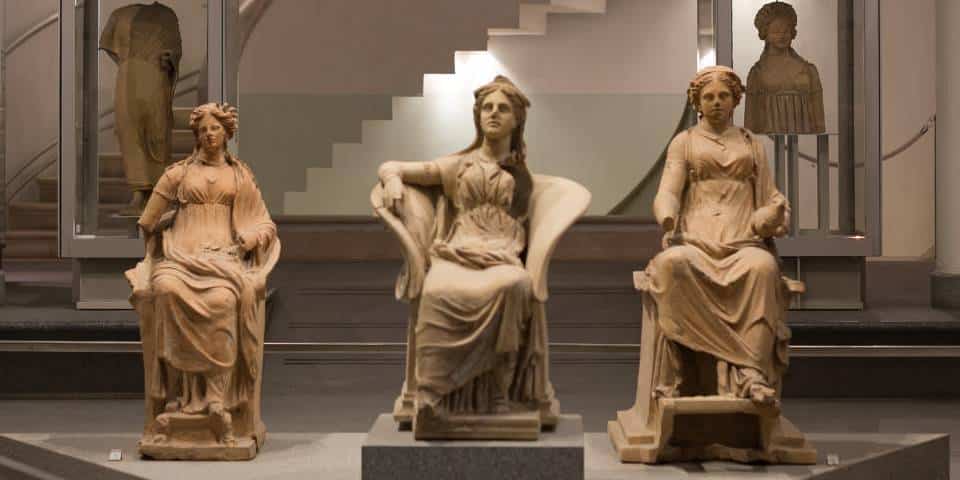
Read also: Ancient Roman Baths of Caracalla .
The National Roman Museum (Museo Nazionale Romano) is renowned in Rome, dedicated to preserving and exhibiting a vast collection of ancient Roman artifacts and archaeological treasures. The museum’s diverse collections are spread across multiple locations, including the Baths of Diocletian, Palazzo Massimo alle Terme, Palazzo Altemps, and Crypta Balbi, showcasing an impressive array of sculptures, frescoes, mosaics, coins, and everyday objects from ancient Rome.
Through its extensive displays, the National Roman Museum offers visitors a captivating journey back in time, providing valuable insights into the rich history and cultural heritage of the ancient Roman civilization.
Interesting Facts about Baths of Diocletian
The Baths of Diocletian are a fascinating historical site with many interesting facts:
- The Baths of Diocletian were the most extensive public baths in ancient Rome, covering an area of approximately 13 hectares (32 acres). They could accommodate thousands of bathers simultaneously and were a grand display of Roman engineering and architecture.
- The baths required an enormous water supply to fill the pools and provide for the needs of the bathers. They were fed by the Aqua Marcia and Aqua Antoniniana aqueducts, which brought fresh water from distant sources to the heart of Rome.
- Some of the marble used in the baths was sourced from existing buildings and monuments, showcasing the Romans’ practice of repurposing materials from earlier structures.
- In the 16th century, parts of the Baths of Diocletian were transformed into the Basilica of Santa Maria degli Angeli e dei Martiri, designed by Michelangelo . The church’s architecture incorporated the ruins of the ancient baths, making it a unique example of Roman ruins incorporated into a later Renaissance building .
- The Baths of Diocletian are now part of the National Roman Museum, which houses a vast collection of Roman antiquities. The museum showcases artifacts from various periods of Roman history and includes the Epigraphic Museum and the Palazzo Massimo alle Terme, among others.
- In addition to the baths, the complex housed libraries and other cultural and educational facilities. The ancient Romans viewed baths as hygiene, socializing, learning, and leisure places.
- The construction of the Baths of Diocletian was part of the emperor’s plan for his retirement. After abdicating in 305 AD, Diocletian retired to his palace in Split, Croatia, which he had also built as part of his grand retirement scheme .
- During the Middle Ages, the Baths of Diocletian fell into disrepair, and some parts of the complex were even used as fortifications. The ruins were stripped of their valuable materials, contributing to their deterioration over the centuries.
Test Your Knowledge about the Baths of Diocletian
Test your knowledge about the Baths of Diocletian by answering the following questions. These questions are aimed at those who have a deep interest in the history of ancient Rome.
What were the baths of Diocletian used for?
When were the baths of diocletian built, why were the baths of diocletian important, what was the baths of diocletian made out of, nearby attractions.
Author: Kate Zusmann
I have lived in the Eternal City for the past 12 years. They say every angle of Rome has its history, and I'm here to tell you about the most intriguing historical facts and city legends. :)
Dive Deeper into Rome's Stories
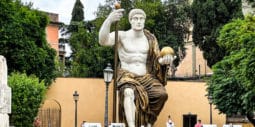
Colossus of Constantine
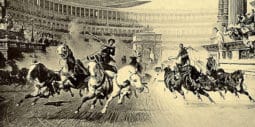
67759 views
Circus Maximus
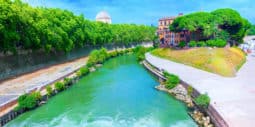
The Tiber Island in Rome
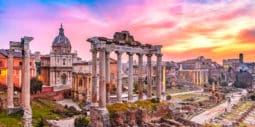
23735 views
Roman Forum – Ultimate Guide for Antic History Lovers
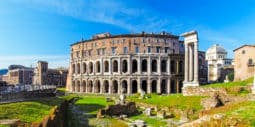
17145 views
The Theater of Marcellus
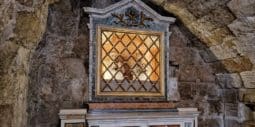
Mamertine Prison (Carcer Tullianum)
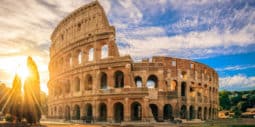
106496 views
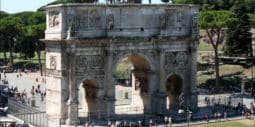
15263 views
Triumphal Arch of Constantine
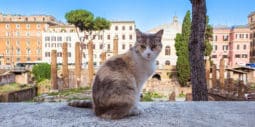
11930 views
Rome Cat Sanctuary Ruins – Largo di Torre Argentina
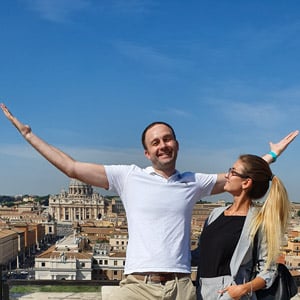
Explore Rome

Monte Testaccio Hill

149583 views
Parione District

What Country is the Vatican In?

House of Monsters (Palazzo Zuccari)

What is the Best Underground Colosseum Tour
Rome.us © 2024. Created with love by Roman experts and guides.
Privacy Policy

THE BATHS OF DIOCLETIAN EXPLAINED

Welcome to the Baths of Diocletian page, where I explore the largest bathing facility in the whole Roman Empire. Built in 306 AD , this luxurious and enormous Imperial Roman Baths served 10,000 people daily for 250 years. Much of this facility still exists, and it has been transformed into museums, gardens, and a stunning Basilica designed by the great Michelangelo himself. Entering this basilica is almost like entering the Baths of Diocletian when it was at its prime and covered in glistening marble and ornate decoration.

The image above shows the large scale of the main baths building that was surrounded on all sides by gardens and walls containing many kinds of structures. Furthermore, the Baths of Diocletian was so huge that its outside swimming pool - the Natatio - was three times the size of an olympic pool and featured beautiful sculptures along the walls, as shown in the drawing below.

I will look at the history, architecture, art, and many other aspects of this ancient bathing complex. And though some parts of the Baths of Diocletian have vanished, nevertheless, the vast ruins, thick walls, and spaces that exist today are still impressive and monumental.
THE BATHS OF DIOCLETIAN

INTRODUCTION
In 306 AD , with the completion of the Baths of Diocletian , Roman baths reached their peak not only in size but also in luxury. Even today, the current basilica inside the former ancient Frigidarium is still one of the most exhilarating interior spaces in the entire city of Rome.
This bathing facility was designed so that 3,000 bathers could use its facilities at the same time for a total of 10,000 every day . The location of the Baths is the Viminal Hill , the smallest of the seven hills of Rome.
This colossal building complex was a larger version of the already vast Baths of Caracalla , which opened 90 years earlier in 216 AD . When you stand in its centre, you can understand why, long after the Roman empire had fallen, people once thought that giants had built Rome.
Built of concrete and millions of bricks, the Baths of Diocletian was decorated lavishly with marble walls and floors, hundreds of columns, frescoes, mosaics, numerous statues, and large upper windows that filled the interior with sunlight.
Furthermore, the size of these baths, including the surrounding outside gardens, walls, and other structures, measured 13 hectares (32 acres) . The actual main baths building itself was an incredible 4.5 hectares (11 acres) in size. One can only marvel at the labour, resources, expertise, artistry, and planning required to build such a massive complex in only eight years ( 298 - 306 AD ).

In ancient times, undoubtedly the Baths of Diocletian complex was an outstanding sight with its vast spaces, marble-covered walls, beautiful mosaics, statues, and frescoes. The image above aptly shows how massive this bathhouse was, and this is just a partial view of the Main Hall showing parts of the Frigidarium and Tepidarium areas.
Notice how the high, vaulted ceilings cover a considerable area of marble floorspace below. This high ceiling's vaults are supported by eight huge columns made of red granite from Egypt, and they are still there supporting the original ceiling today. These columns are 17 metres high (56 feet) and 1.6 metres wide (5 feet).
The incredible amount of detail and decoration you see displayed throughout the drawing above was typical of Roman design, which loved splendour and luxury. There is a pool on the left and right sides with an even larger pool in the distance. There are also large "tubs" at various locations on the floor. And, like many large Roman buildings, the brick superstructure was covered with marble on the inside and white stucco on the outside.

In the image above, we see the same Main Hall of the Baths of Diocletian as it looks in the 21st century (2008). The view is of the same large, arched passageway on the right side of the fourth-century drawing above the photo. Amazingly, those reddish-granite columns and capitals (as well as the ceiling) in the drawing have miraculously survived a 1,700-year journey through sackings, wars, pillaging, earthquakes, and neglect.
If you think that the photo above looks like the inside of a church, you are correct. In the 16th century, this church was designed by the great artist and architect Michelangelo . He built this church (basilica) while using as many of the original materials as possible, within the ancient Frigidarium and Tepidarium, of the Baths of Diocletian .
During the work, the floor was raised 2 metres (2 yards) because the outside ground level had risen over the centuries. Moreover, the entrance to this church - which is actually a basilica - is through what remains of the former circular Caldarium , shown in the image below. When people pass through the doors of this basilica, they are entering the former Tepidarium section of the baths, which has a magnificent dome with a hole (oculus) in its centre. This dome is a smaller version of the great dome found in the Pantheon .

As you can see, most of the Caldarium entrance is now gone. And though the entrance may look very worn and damaged, the interior of the church is actually stunning and quite beautiful. The bluish doorway on the left is part of the western section of the Baths used as a granary, an orphanage, and a poorhouse for women.
The basilica entrance faces south towards a large plaza called the Piazza della Repubblica built in 1898 . This entrance changed drastically in appearance from 1749 to 1911 AD , which I will discuss in detail later.
THE NAME AND HISTORY OF THE BATHS OF DIOCLETIAN

Built during the years 298 to 306 AD , an interesting fact about these baths is that they were not built by Roman Emperor Diocletian (244 - 311 AD) at all. In fact, by the time the baths finally opened, he was no longer an Emperor.
Diocletian may never have seen these baths because he did not live in Rome; instead, he lived his entire life in the Eastern Roman Empire, where he was born in present-day Croatia. However, because he visited Rome in the year 303 AD for the 20th anniversary of his rule, he may have looked at the bathhouse while it was still being constructed.
The person who commissioned and built the Baths of Diocletian was Emperor Maximian , who co-ruled the Roman Empire with Diocletian . They both ruled the Roman Empire from 286 to 305 AD , although Diocletian was an Emperor starting in 284 AD .
The Western half of the Roman Empire, where Rome was located, was ruled by Maximian and the Eastern half was ruled by Diocletian . Despite this division, the empire was not really split. It just got so big that it was too much for one Emperor to handle. This arrangement was similar to when the Roman Empire was co-ruled by Octavian (Augustus) in the West and Marc Antony in the East for ten years after the death of Julius Caesar in 44 BC/BCE .
An interesting fact is that, before the baths were completed, both Maximian and Diocletian abdicated in the year 305 AD , the only Roman Emperors to willingly do so. However, while Diocletian never became an Emperor again, Maximian came out of retirement quickly and tried to take power a few times before being forced to commit suicide by Emperor Constantine the Great .
It is said that thousands of enslaved Christians - possibly 40,000 or more - did the hard work of building the baths. It is possible Christians were used as slaves because Emperor Diocletian was hostile towards Christians and instigated policies that persecuted them. And that is why there is a church within the ruins dedicated to Christian martyrs who died while building the baths.
ROMAN BATHS SIZE COMPARISON
The alternating diagrams below show the outlines of the Baths of Diocletian and the Baths of Caracalla , so you can compare them. You will see that the main building of the Baths of Diocletian was larger. However, you will also notice many similarities such as:
Another shared characteristic is that both these baths were built mainly of bricks and concrete covered with a marble veneer on the inside and white stucco on the outside.
In the diagrams below, please note that, although the Baths of Diocletian main building is 20% larger, the Baths of Caracalla complex (building and surrounding gardens, walls, etc.) occupied a more extensive area - 25 hectares (62 acres) versus the Baths of Diocletian's smaller 13 hectares (32 acres).

Notice how the Baths of Caracalla has large and circular exedras on the lower left and right sides of its outside wall. In comparison, the Baths of Diocletian , in addition to its huge bottom theatre exedra , also has numerous circular and rectangular exedras all along the other three surrounding walls.
The semi-circular exedras are said to have a "hemicycle" shape, meaning semi-circular. The arrangement of the water pools is precisely the same. In addition, both baths have two Palestrae (exercise area) areas, one on either side of the Frigidarium water pool.
THE BATHS OF DIOCLETIAN WERE THE LARGEST EVER BUILT
The moving panorama below shows the Eastern facade and then the Western facade of the Baths of Diocletian in the fourth century when the whole structure was standing. These baths were enormous and covered a vast expanse of ground estimated at 140,000 square metres (1,500,000 sq. feet). The highest point of these buildings, the Main Hall in the centre of each facade, was over 30 metres (100 feet) high. As you watch the facades of these baths scroll by, keep in mind that a person standing next to these buildings would appear tiny.

As shown in the video above and image below, the Baths of Diocletian complex was very extensive, a characteristic of a Thermae baths, also known as an Imperial Baths . Much land was required for all the areas associated with the main baths building, such as the gardens, courtyards, and other smaller buildings all enclosed with walls and towers. I have labelled some of the various sections in the image below. The Romans called a gymnasium or exercise courtyard a Palaestra .

Because the images above identify only the major sections of the Baths of Diocletian , below is a complete breakdown of all the different areas and structures associated with this vast baths complex. Four Main Pools refer to the Frigidarium, Tepidarium, Caldarium, and Natatio main pools:
The Baths of Diocletian grounds housed a theatre inside a huge, semi-circular exedra that extended beyond the outside walls. This very prominent exedra, labelled "theatre" in the image above, has been destroyed over time; however, the ancient outline was preserved by the current buildings facing the Piazza della Repubblica , seen in the image below.
At the centre of this plaza is a large fountain, the Fontana delle Naiadi . The buildings seen today were designed by Italian Architect Gaetano Koch in the late 1800s. In his design, he made sure to follow the outline of the former ancient exedra when placing the buildings.

You can see how huge this exedra was, and it is fascinating how the current plaza still preserves the outline of the ancient exedra. How did this happen? Perhaps, over the centuries, much of the exedra structure remained; and, over time, buildings were built along the periphery of the ancient structure.
Or, perhaps Mr. Koch demolished those parts of the exedra that still remained in addition to buildings covering or adjacent to the ruins. As explained further down, parts of this exedra were still standing in the 1600s . This massive exedra/theatre complex is unique to the Baths of Diocletian because the Baths of Caracalla has a large water reservoir made up of many cisterns instead of a theatre in its layout.

In 1888 , the current fountain, pictured above, was designed and built by architect Alessandro Guerrieri , and this replaced another fountain there dating from 1870 . The current fountain kept evolving over a few decades until it was finally completed in 1912 .
Stone statues of lions were replaced by four bronze statues of Roman water nymphs called "Naiads" created by Mario Rutelli . He also created the central statue of the Roman sea god Glaucus Pontius . This large and beautiful fountain lies in the heart of the former exedra of the Baths of Diocletian .

The exedra still existed in the 1550s , as shown in an engraving above. In the foreground of the image, you can see the curved wall of the exedra still standing as it faces the Baths of Diocletian's western side. At the far left is a round tower which is an ancient, domed rotunda building which today is the church of San Bernardo all Terme .
The baths building with two second-floor "windows" in the upper centre-right of the image is the Caldarium which was demolished in 1587 by Pope Sixtus V . Unfortunately, all that remains of the Caldarium today is a curved, concave wall with an entrance leading into the basilica inside the baths.
EXTERIOR OF BATHS OF DIOCLETIAN
Below is a collection of images showing various sides of the Baths of Diocletian in the 21st century. These photos show how large this bathing complex still is despite much of it now now being gone. I show photos taken from different sides of the baths complex, including an overhead view. The building lies on a southeast to northwest trajectory.

In the photo above, we are looking at the eastern side of the Basilica, which borders the former gymnasium area. In the next photo, the view will be in front of that palm tree and looking right.

This now vacant space was where the eastern Palaestra , a long and spacious gymnasium courtyard, was located. This photo conveys the extensive size of this ancient gymnasium. Below the largest window on the left is where the main entrance to the basilica was located, as designed by Michelangelo .
One hundred eighty years later, this entrance was walled off by Clemente Orlandi around 1746 . To see this entrance area in the year 1551 , click this link , and you will see that that whole large window, right down to the ground, used to be open before the window and wall below were added.
On the right side, you can see the distant Hall IX , which is used currently to display ancient sculptures and architectural remnants. This hall is one of several on the eastern side of the baths.

This is a view of one section of the "rear" wall of the baths, opposite the entrance side. In the ancient past, this wall formed a wide facade made of marble panels, columns, sculptures, and coloured mosaics that created a dynamic reflection on the surface below of the enormous Natatio outdoor swimming pool. The size of this pool was three times that of today's Olympic-sized pools.
Despite the pillaging of practically all the fine decorative materials, the facade's height, scale and intricate architecture is still impressive. And here and there, one can still see some chunks of white marble the pillagers did not manage to remove. The shape and position of these surviving pieces of marble indicate where tympanums, columns, and entablature were located. One can only imagine how grand and awe-inspiring it must have looked so long ago.

When a large train station was built nearby in 1867 , it changed the neighbourhood considerably. For example, Via Cernaia street (shown above) was built through the west side ruins in 1878 . In the upper left, the Octagonal Hall rotunda with its intact dome is seen. Connected to the rotunda are the ruins of a wall that marked the western edge of the main baths building. In the foreground is the location of the western Paleastra gymnasium which is now filled with a street and parked cars.

To access the basilica of St. Mary of the Angels and Martyrs , one goes through the main entrance on the left. When standing directly in front of this entrance, you will notice that the partial walls on either side are curved - this is because these walls are the remains of the large and circular Caldarium area of the building.
After proceeding through the main entrance, you immediately enter a large room with a dome. This room is the former heated Tepidarium area that provided warm baths for the patrons. The large structure on the far right of the photo above is the basilica within the former Frigidarium .

In this final photo of the exterior of the baths, I show the whole complex from above, looking south. On the left is the eastern side containing various halls that display ancient art. On the right is the western side, showing Via Cernaia going through the ruins and separating the western edge from the main baths.
In the middle is the large basilica of Santa Maria degli Angeli e dei Martiri (St. Mary of the Angels & Martyrs), with the Small Cloister and part of the Large Cloister located below the basilica. At the top, you can make out the vast semi-circle of the Piazza della Repubblica which occupies the site of the former huge theatre exedra of the Baths of Diocletian .
The domed Octagonal Hall is in the top-right corner. Furthermore, the vast wall facade that faced the now-vanished Natatio can be seen stretching all along the breadth of the basilica.
INTERIOR OF THE BATHS OF DIOCLETIAN

The inside spaces of the Baths of Diocletian have certainly changed over the 1,700 years since it opened in 306 AD . A visitor to these baths today will undoubtedly notice that the interior parts of the Baths of Diocletian vary dramatically, and many sections no longer exist.
While some areas of the baths resemble how they looked in the fourth century due to renovations, other areas have been reduced to bare brick and concrete due to fifteen centuries of pillaging and neglect. Fortunately, the basilica's beautiful vaulted ceiling and eight supporting columns are the original structures that astonishingly survived 1,700 years.
This ceiling, of course, is the Main Hall of the former Frigidarium area, shown in the photo above. In addition, the domed ceilings of the former Tepidarium and Octagonal Hall also have survived.
Despite the unfortunate reality that many parts of the Baths of Diocletian have been lost, the remaining sections have been converted into two churches and various museums where ancient art and other antiquities are displayed. These areas of the Baths of Diocletian in the 21st century are explored further on this page.
THE BASILICA IN THE BATHS OF DIOCLETIAN

THE JOURNEY FROM ROMAN BATHS TO CHRISTIAN BASILICA
In the very heart of the largest Roman baths in Rome, one finds a Catholic Basilica built inside the former Frigidarium and Tepidarium sections. The odds of an ancient Roman building surviving the ravages of time significantly increased if it was converted into a church.
However, unlike the Pantheon , which was converted into a Christian church early in 609 AD , it took an additional 950 years for the Baths of Diocletian . That was almost ten centuries during which the baths were abandoned, neglected, and pillaged for materials.
Fortunately, due to its vast size, solid construction, and some luck, the central area of the ancient baths retained its vital column and roof infrastructure - this made the process of conversion much more feasible and successful.
Two critical periods in European history were the Roman Empire and the Renaissance. These two eras became joined in the transformation of part of the Baths of Diocletian into a basilica in the 1560s .
Another important consideration regarding the transformation is how it helped to preserve and bolster the baths crumbling infrastructure. By the 16th century , the Baths of Diocletian's structure was considered so hazardous that the public was barred from accessing the site. The authorities worried that parts of the structure might fall on people's heads.
The history behind this remarkable conversion from Roman ruin to Renaissance basilica is quite fascinating, and it involves one of the Renaissance's greatest artists, as explained below.

MICHELANGELO AND THE BATHS OF DIOCLETIAN
In 1561 AD , Pope Pius IV commissioned Michelangelo Buonarotti to transform the Frigidarium and Tepidarium sections of the Baths of Diocletian into the church of Santa Maria degli Angeli e dei Martiri (St. Mary of the Angels & Martyrs). The Church believes that many Christians died while being forced to build the baths during the years 298 to 306 AD .
Twelve hundred years later, a young priest from Sicily by the name of Antonio Lo Duca had a vision in 1541 AD that ultimately led to the creation of a church inside the ancient baths. In his vision, he saw a bright light over the Baths of Diocletian , and he beheld seven Angels that had given relief and assistance to Christian martyrs forced to build these baths.
Antonio believed his vision meant God was telling him a church must be built in the ruins of the Baths of Diocletian to honour the Christian martyrs and the seven angels - and thus the reason for the words "Angeli" (angels) and "Martiri" (martyrs) in the church name.

However, it took many years of pleading his case to various church officials before Pius IV , Pope from 1559-1565 , finally agreed to finance renovating the baths into a church. The considerable task of the renovation was given to Michelangelo , who began working on the project in 1561 .
In his usual brilliant fashion, Michelangelo , at the age of 86, used the original parts of the baths as much as possible as he adapted the remaining structures of the baths' central area into a church basilica. Unfortunately, in 1564 , he passed away before finishing the work of transforming the baths into a basilica.
Michelangelo's project thus had to be completed by one of his students by the name of Jacopo Lo Duca . This man, coincidentally, was the nephew of Antonio Lo Duca , who had the vision of angels.
Almost 500 years later, and after more renovations, this church still looks impressive inside. Entering it is almost like visiting this part of the baths in the fourth century when it was filled with tall columns, elegantly carved marble decorations, walls covered with marble panels, and gleaming floors made of inlaid marble and granite.
The success of Michelangelo's renovation is undeniable. Just like the ancient Roman architects before him, he created a sensation of huge, beautiful spaces that amaze and delight the eye.

An amazing fact about the photo above is that many of those columns and the marble capitals are the ancient originals that survived over 1,700 years. The red granite columns were quarried in Egypt and shipped to Rome, which was a huge undertaking as each 12-metre long column (40 feet) weighed 100 tonnes.
So though this church is not really an exact reproduction of what the ancient baths looked like, you can still get a good approximation of the splendour of ancient Roman architecture, akin to the experience of seeing the interior of the Pantheon .
Upon seeing the interior of Santa Maria degli Angeli e dei Martiri for the first time, I was impressed by the soaring ceilings, huge columns, and intricate marble decoration throughout the vast space. And when you consider that this whole church occupies only a small part of the whole baths - one begins to understand how vast and impressive these ancient baths must have been in their prime.
The carved marble detailing shown in the photo below is outstanding. The amount of work and skill needed to achieve this level of elegant architecture is truly impressive. So often, when we see Roman ruins, these kinds of details have either been pillaged or worn down to just a shadow of their former glory. This same level of artistry is also evident in the Pantheon, which again demonstrates how beautiful Roman architecture was and how much we have lost.

THE CEILING OF THE BASILICA IN THE BATHS OF DIOCLETIAN

The eight red granite columns that support the vaulted ceiling are the original ancient columns that came from Egypt. The ceiling and the capitals atop those eight columns are also ancient and have survived into the 21st century. In my 2019 photo above, you can see this vaulted ceiling which has had a combination of plaster and paint applied to it during 1560s renovations of the baths.
Also in this photo, you can see where eight ceiling vaults come down and make contact with the eight original columns. And those columns were actually much higher in the past because they stood on top of a 2-metre high (6 feet) rectangular plinth which disappeared from view when the floor was raised.
If you have seen the ceilings of other very old and great churches in Italy, you will notice quite a difference. The ceiling we see here is white, unadorned, and simple. This ceiling is unlike other church ceilings that are covered in frescoes and decoration. I am glad they left the ceiling of Santa Maria degli Angeli pure and white.
You may notice there are several dark spots, which may be where lighting, such as chandeliers, were suspended - but I am guessing at what they might be. I do remember reading an article describing those ceiling spots as the "original bronze rosettes from which lighting was hung." If those spots really are "bronze rosettes," then when were they created? During Roman times or the Renaissance? Unfortunately, I could not find any further information. Next time I am in Rome, I will enter the basilica and use binoculars to get a good, close look to see what they really are, other than just dark spots.

Another wonderful effect of this ceiling, as shown above, is how it works with the surrounding large windows to create a pleasant effect of light on the inlaid marble floors and walls when the Sun is shining. Somehow, the pure white light is refracted by the windows to produce a rainblow-like effect of many colours - this compliments both the colours of the floor marbles and the large paintings on the walls.
I noticed that the effect stopped when clouds covered the Sun. At first, I assumed that, like other old churches, the basilica had stained glass windows casting coloured light on the floor - but that is not so.
The only stained glass in the whole basilica was located in the main entrance area (facing the Piazza della Republicca). In ancient times, this entrance area to the basilica was the Tepidarium, which is still covered with a dome with a large hole in its centre, just like the Pantheon . It is a beautiful dome with a rosette in each of the 168 coffered panels.

In ancient times, this dome's opening, called an oculus , was open to the sky, and rain fell into a pool below. However, now it is covered. In the year 2001, the artist Narcissus Quagliata made a 5-metres wide (16.5 feet) stained-glass cover for the hole.
The top of this dome sits 23 metres (75 feet) above the floor. Actually, there was another glass cover, but it was of a yellowish hue that did not compliment the basilica's interior. Also, it allowed rain to enter, which caused water damage - and so it was replaced by this pleasing and modern stained-glass creation. To see a closeup of the stained-glass cover, click this link .

THE ROOF OF THE BASILICA IN THE BATHS OF DIOCLETIAN
The ancient Roman architects made extensive use of arches to create Groin Vaults that could form ceilings over large areas. But if an arch is supporting substantial weight, it could collapse if both ends of the arch are not strongly supported.
The trick was to use thick walls and reinforcements, called Buttresses , at either end of the arch to make it stable and strong. The ceiling of the Main Hall of the Diocletian Baths is made entirely of Groin Vaults which I show in the photos and diagrams below. Each of the four arches within the three inner "X" formations is a "groin" where all four groins join together and reinforce each other (blue circle).

In the diagram below, I show how an arch can be reinforced and stabilized by buttresses. You can see how the bottom left and right sides of the arch are under considerable pressure due to gravity.
Moreover, the force is pulling not only down but also to the sides, which could cause a collapse. The buttress at either end of the arch helps to counter any tendency of an arch to collapse by pressing up against either end of the arch.
A buttress is especially important when a column supports two or more arches, as is the case in the Baths of Diocletian frigidarium Main Hall. Each of the eight original columns supports at least three and sometimes four arches.

This principle was used extensively throughout the Middle Ages in the construction of Gothic cathedrals, which used a similar type of arch/vault system called Rib Vaults as opposed to the ancient Roman Groin Vault . Long after the fall of the Western Roman Empire, many Roman ruins remained to show later generations how to build huge structures, as explained in this great article about gothic and romanesque architecture .
THEY RAISED THE FLOOR OF THE BATHS OF DIOCLETIAN IN 1564
After the destruction of many aqueducts supplying water to Rome in 537 AD , the Baths of Diocletian were no longer used. And then, for over 1,000 years, the baths remained abandoned until the 1560s , when Michelangelo began converting the baths Frigidarium into a church. However, by this time, much of ancient Rome was now covered by several metres of sediment and debris.
Because the ground level outside the Baths of Diocletian was much higher than the inside floor level, Michelangelo decided to raise the floor so that it matched the outside ground level.
Therefore, the floor inside the baths was raised by 2 metres (6 feet), which brought the floor surface to just below the bottom of the eight ancient columns still supporting the Main Hall ceiling. In the photos below, the 306 AD lower floor level changes to the current higher floor level raised in the 1560s during Michelangelo's modifications.
The massive red granite columns stood on 2-metre high (6.75 ft) rectangular plinths that mostly have been buried during the floor raising process in the 1560s . In the images above, I have lowered the floor back to its original level, thus fully exposing the ancient plinths. The image shows how much taller the columns were in the ancient past.
Today, just a small part of the plinths can be seen below the bottom of each column's torus . The ancient frigidarium hall likely was more impressive to the Romans because the ceiling was higher, thus creating a larger space. The hall we see today, though still impressive, is nevertheless truncated.
THE SMALL CLOISTER OF THE BATHS OF DIOCLETIAN

Before exploring the cloisters of the Baths of Diocletian , I will explain the background history and characteristics of both the Small Cloister and the Large Cloister . On the grounds of the former Baths of Diocletian , you will find two four-sided courtyards, one much larger than the other.
These courtyards are called "cloisters," and the larger one is the biggest in Italy. Because these cloisters were built in the 16th century , they did not exist during Roman times. In fact, both cloisters were built on top of the ruins of the Baths of Diocletian . Furthermore, as regards the Large Cloister , parts of the baths were actually demolished to make space for it. The image below shows the small and large cloisters from the air above the Baths of Diocletian. You can see how the Small Cloister is located above the upper left corner of the Large Cloister , and it is much smaller in size.

The reason why they are called "cloisters" is that they are a form of colonnaded (columned) courtyard associated with monasteries, convents, and churches. For over three centuries, from the 1560s until 1881 , a monastery existed within the baths, and it is now used to display Roman statues as part of the "National Roman Museum."

When Pope Pius IV commissioned Michelangelo to convert the central part of the Baths of Diocletian into a church, he also decided to make Carthusian monks the caretakers of the baths. However, to fulfill their duty, these monks required a Charterhouse , which was built and existed in the Baths of Diocletian until 1884 . The cloisters were built to house and serve the needs of the monks, who typically wore white robes, as shown in the 17th-century painting above.
The monks who follow this order still exist today. However, their order is still secluded, and they live almost like hermits, living a life of work, silence, and contemplation. They live in cells along the four sides of a courtyard known as a Cloister , where they spend most of their lives in seclusion from one another. In the Baths of Diocletian , their cells were located along the four colonnaded hallways of the Larger Cloister .

Very close to the basilica, on the northeast side, a small courtyard of light-coloured stone brick floor can be found - this is the Small Cloister , which is very reminiscent of cloisters in Naples, Florence and other parts of Italy. This cloister is very simple, with small columns, a stone courtyard floor and a small well in its centre.
As shown in the photo above, despite this cloister's simplicity, it is nevertheless quite beautiful. The entire Small Cloister was built above one-third of the ancient Natatio swimming pool area, which is now mostly filled in. However, a small part of the ancient Natatio still exists and can be seen by the public - the photo below shows what remains.

In the photo above, the far left wall is the Small Cloister . The brick walls on the right are part of the basilica - in Roman times, they were covered in marble, and the niches held statues. You can still see some traces of the original marble in the brick where columns and colourful mosaics were affixed. To the left, the viewer is looking southeast towards Hall VIII - the door of Hall IX also can be seen.

Within the columned corridors of the Small Cloister , various statues are on display. Until recently, this cloister held famous marble statues and reliefs from the Boncompagni-Ludovisi Collection - an example of a Ludovisi high-relief is shown above. Because of this association with these statues, this cloister is also known as the Ludovisi Cloister .
In 1997, the Boncompagni-Ludovisi collection of statues was moved to another part of the National Roman Museum called the Palazzo Altemps .
Besides statues, the cloister also displays historical documents of the Roman Catholic church. Below are photos of Roman statues currently on display within the colonnaded courtyard hallways of the Small Cloister .

THE LARGE CLOISTER OF THE BATHS OF DIOCLETIAN
The Large Cloister , also known as Michelangelo's Cloister , is the largest in Italy. Each of the four sides of this large space measures 100 metres (330 feet) and contains over 100 solid travertine columns supporting arches. Within these colonnades are around 400 statues, decorative architectural objects, and sarcophagi. The interior of this large cloister is a large green space.
Whereas the Small Cloister was built primarily on top of the former Natatio outside pool, the Large Cloister was built over the northern ruins of the Baths of Diocletian and it extends past the northern wall limit of the baths.

You can see why this is considered the largest cloister in Italy. It is very wide, and each of the four sides contains 25 columns supporting arches within the two-storey structure. The broad expanse of grass, trees and plants provides a soothing retreat from the heat and congestion of Rome in summer. It is an oasis of quiet and contemplation in the heart of the bustling city of Rome.

On the left, you can see many ancient Roman sculptures along one of the colonnaded hallways of the Large Cloister . The right side shows the top of the Baths of Diocletian's frigidarium (now a church) looming above the cloister. The chimney-like structure is part of the Natatio wall facade.

The heart of the Large Cloister has a lovely fountain surrounded by trees, hedges, and large statues that combine to create a wonderful garden and refuge. I am sure the Carthusian monks found this retreat very relaxing and comforting. Tradition says some of the large Cypress trees were planted by Michelangelo in the 1560s while working on the Basilica. If he actually did plant theses trees, they are now over 450 years old.
The series of four photos below show some of the fantastical carved-stone animal heads found in the Forum of Trajan . They are at least 1,900 years old, and they are so different from typical Roman sculptures.
I am sure these wonderful animal statues really delighted Roman children so long ago and probably still do today. Many thanks to both Jamie Heath and Brad Hostetler for all the great photos in this section and for making their work available for educational use.

The image below shows how the Large Cloister extends considerably beyond the ancient walled perimeter surrounding the grounds of the Baths of Diocletian . Left of centre, you can see the outline of an ancient exedra and wall, which show where the ancient boundary was - I have indicated the boundary with yellow hyphens.
When building the Large Cloister for the Carthusian monks, the ancient ruins that were in the way were demolished, unfortunately. You can see how this cloister extends past the northern wall boundary of the former baths.

If you visit the Baths of Diocletian , make sure you do not miss seeing this beautiful and large cloister - especially when visiting in the hot and hectic summer in Rome. This place is truly soothing and wonderful on a hot summer day. Also, because the Baths of Diocletian is not a major tourist hot spot, usually you will find fewer people - you can relax and take your time. And, of course, this cloister has many Roman antiquities on display that are worth seeing.
THE MERIDIAN LINE IN THE BASILICA OF ST. MARY OF THE ANGELS AND MARTYRS
After entering the basilica and proceeding into the main section, turn to the right, and you will see a line of barrier posts arranged at an angle. These posts protect a series of long bronze lines and circles on the floor surface. These floor markings form the Meridian Line , which is a complex and very accurate sundial built in 1702 , 140 years after Michelangelo transformed the interior of the baths into a basilica in the early 1560s .

Each day at noon, weather permitting, a ray of sunlight comes through a hole in an upper wall to shine a spot of light on the bronze lines in the floor. The location of this spot of light keeps changing over the course of a year.
Basically, the interior of the basilica was turned into a giant Camera Obscura . I show how it all works in my diagram below. The wall where the hole is located faces southwest towards the Sun moving from east to west during the day.
At noon, the Sunbeam effect happens, and the bright spot's position on the floor is observed. I show the angle and location of the interior Meridian Line on the floor of the basilica in relation to the Sun's daily trajectory across the sky.

MERIDIAN LINE'S HISTORY
The story of how the Meridian Line came into existence provides an intriguing look at Italian politics during that part of the Renaissance . In the year 1700 , Italy was not a united country - it was composed of several competing states and cities.
Furthermore, even though the two cities of Rome and Bologna were both a part of the Papal States , there nevertheless existed a rivalry between them.
When the city of Bologna commissioned Giovanni Cassini in 1653 to create a meridian line inside the city's grand cathedral of San Petronio (shown below), Pope Clement XI felt compelled to do the same. To him, it was important that Rome, the heart and soul of the Church and the Papal States, also should have a meridian line that was even more significant than the one in Bologna.

And thus, in 1700 , the Pope commissioned a true "Renaissance Man," Franceso Bianchini (shown below) - architect, astronomer, and mathematician - to build a great meridian line inside the basilica within the ancient Baths of Diocletian .
Clement XI stated that a meridian line was required to show how the Gregorian Calendar , which revised the ancient Julian Calendar , was superior to the ancient, pagan calendar. Also, having such a complex sundial in Rome would allow the Church to calculate the yearly date to celebrate Easter accurately. The only difference between the two calendars was that the year was 365.25 days long in the Julian but 365.2425 days in the Gregorian calendar.

MERIDIAN LINE'S PURPOSE
Seemingly, building a meridian line just to calculate when to hold Easter was extravagant, but it was truly necessary. Unlike Christmas, which is occurs on the same day every year, the date for Easter changes from year to year - it has to be calculated based on a formula, shown below:
Easter day is held on the first Sunday after the full Moon that occurs on or after the spring equinox. But ... if the full Moon falls on a Sunday the date changes and Easter is thus held on the next Sunday.
Did you understand all that? It is a bit confusing. The point is that the Meridian Line makes it simple to figure out when Easter should be held. I think another use of this device was to calculate when the winter and summer solstice, and the spring and autumn equinox would occur.
Another possible reason was the Catholic Church's desire to show how their precise Meridian Line, based on the Gregorian Calendar developed by Pope Gregory XIII in 1582 , was superior to the Roman pagan system of time measurement. And, of course, the Papal authorities wanted to have a superior time instrument in Rome, the heart and centre of the Catholic church.
One of the main reasons why the basilica within the Baths of Diocletian was chosen as the location for the Meridian Line is based on its structure and age. Placing it inside a 1,400-year-old building guaranteed that all the walls and floors had settled so there would be no worries about shifting architecture - thus ensuring the Meridian Line would remain accurate.
Much time and expense were required to build and carefully calibrate the floor markings and wall hole. Therefore, any shifting of the structure could have serious implications. Seeing as how this Meridian Line still works perfectly after 320 years, I guess they chose a great location in 1700 for their amazing sundial.

Apart from all the technical and propaganda reasons for the existence of this remarkable sundial, it can be appreciated simply for its beauty and artistry. The bronze lines and circles, in combination with the astrological markings and figures set within white marble, create a beautiful work of art, as shown in the photo above and below.
Many other Meridian Lines were built in Italy (Vatican, Milan, Florence, Palermo), France (Saint Sulpice), and even in England (Durham Cathedral).
The first attempt at building a Meridian Line happened in the basilica of Santa Maria Novella in Florence from 1572 to 1574 . It was commissioned by Cosimo de' Medici , and Ignazio Danti designed it, but it was never finished; unfortunately, Cosimo de' Medici died before it was finished.

An interesting aspect of these Meridian Lines is how they are helpful in showing how much a building has shifted when the alignment of the Sun's light on any of the lines starts to become inaccurate. Also, a Meridian Line can be called a "Large Scale Gnomon."
It is splendid to see how this centuries-old technical and scientific creation in the basilica of Santa Maria degli Angeli e dei Martiri still works well and delights people every day. I am sure it will keep working fine for many centuries to come, barring a destructive earthquake or some other calamity.
NATIONAL ROMAN MUSEUM IN THE BATHS OF DIOCLETIAN
A great museum of Roman antiquity exists in Rome, and it is called the National Roman Museum ( Museo Nazionale Romano ). This museum was created in 1889 and was initially centred in the Baths of Diocletian .
However, in more recent times, the museum has now spread to three additional locations in the city of Rome. Within the Baths of Diocletian "branch" of this museum, both ancient art and modern art are displayed in some of the surviving great halls and rooms within the baths, which are known as Hall VIII, Hall IX, Hall X, Etc.

The image above shows Hall X , which was one of the ancient grand entrances into the main baths building. The two ancient statues in the photo are part of the Tomb of the Platorini family that was reassembled in this room in 1911 after being moved from its location near a Roman wall along the Tiber river.
Most likely, the tomb was reassembled for an International Exhibition celebrating Italy's 50th anniversary of unification. Many of this exhibition's displays were held in the baths. The modern statue is a work by the British sculptor Henry Moore (1898-1986). More of his work is shown in the following two photos.

The splendid photos above and below show Hall XI within the Baths of Diocletian. This large hall measures 40 metres long (130 feet) by 11 metres wide (36 feet), and the former barrel-vaulted roof has been replaced with a new one.
In ancient times, this room was a cistern to store water for the large outside Natatio swimming pool. The inner walls of this extensive room were covered with a special mortar that made the whole room watertight.
However, archeologists believe this room was not always a cistern and may have had another purpose during the early years of these Baths. Probably, when the Baths began operating at full capacity, it was discovered that there was insuffient water flow to meet the requirements of the open-air and enormous Natatio pool.
Obviously, the Romans had to immediately begin convering this long room into a water storage area. The walls must be very thick to have withstood all that water pressure without buckling.

In the photo above, more abstract sculptures by Henry Moore are displayed. This photo conveys well the length and height of this ancient room used to store water so long ago. The roof and ceiling are not ancient. Unlike the Frigidarium, the roof of this structure did not survive. On the far right, some of the mortar that waterproofed the walls still clings to the brickwork along the bottom. In the background, you can see a large floor mosaic which is shown in greater detail below.

Also in Hall XI is a large Third Century mosaic, shown above, which portrays Hercules and Achelous . However, this mosaic did not exist in the Baths of Diocletian during Roman times. Originally, this mosaic was in the Villa of Nero in Anzio . Placed in storage in 1931 , it was only recently moved to its new location in Hall XI , where it is safe from the effects of Sun and rain. This mosaic is discussed further in the "Mosaics" section further down the page.

Until the 1990s , many ancient sculptures were on display in various parts of the Baths. However, starting in 1998 , most of the sculptures were transferred to the nearby Palazzo Massimo alle Terme , another branch of the National Roman Museum in Rome. Despite the transfer, many Roman sculptures remain on display in the Large Cloister and Halls of the Baths of Diocletian , as shown in the photo above and below.
Today, even modern art is displayed during various exhibitions within the Baths. Though the Baths of Diocletian focuses primarily on art that is ancient, contemporary art is also included, as shown earlier in photos of modern sculptures in Hall XI . Below is a photo of Hall IX , located in front of Hall X . This hall is not entirely roofed and houses partial sculptures and surviving pieces of architecture from the Baths of Diocletian .

The museum first began in the Baths of Diocletian and then spread to other locations in Rome. Today, one of those locations is still within the baths, which houses two of the museum's branches:
Also, various Roman statues and other antiquities are spread around the various halls and other areas of the baths but not within the basilica. These areas are shown below in a map of the baths.

In my diagram above, just right of centre, you can see the location of the two museums labelled in yellow. To the left, the various halls displaying art are shown. The location of the two cloisters in relation to the basilica is shown, and you can observe how the Large Cloister takes up considerable space.
In the next section, the two museums listed above are explored. I will describe their purpose and what they are displaying.
MUSEUM OF ROMAN WRITTEN COMMUNICATION
This museum is located inside a 3-storey modern building just below the Large Cloister . Essentially, this is a museum that looks at thousands of ancient Roman inscriptions inscribed on a wide range of objects. These objects include plaques, sculptured reliefs, bricks, tombstones, pipes, and lamps - anything inscribed with ancient Roman writing that helps us to understand Roman life and culture.

Just like people today, the Romans had many aspects to their lives beyond work and family. The thousands of inscriptions help us to understand and experience Roman humour, funerals, politics, religion, and various social aspects of their lives. And though this museum houses over 20,000 different objects, only 900 are on display.
This collection began in the late 1800s , and most of the items were discovered in and around Rome. The people who either inscribed the items or are mentioned represent a wide swath of Roman society - soldiers, plebians, patricians, slaves, senators, and even Emperors.

Above are two photos showing a metal codex from the fourth or fifth century AD. Only three of the seven pages are shown. Each page is filled with writing and images on both sides. A metal cover protected the book, but only the back part is shown. The images show a bearded man and a woman in a robe as well as a cow or ox.

Though the Romans wrote mostly on scrolls, they also had hardcover books, just like today, which they called a Codex . Unfortunately, due to the ravages of time, virtually all Roman books have disappeared except for a few. Above is an example of an actual Roman book from the middle 300s that has survived in good condition.
The book is quite large and, when opened, is almost 80 cm wide (30") wide and 34 cm high (over 1 ft) high. It is fascinating that this book was written just a few decades after the Baths of Diocletian opened. This book is a copy of the New Testament from the early Christian church of the Roman empire. Unfortunately, this book is not in this museum. I included it simply because it is the best example of "Roman Written Communication" in existence, in my opinion. This book really should be in this museum.
PROTOHISTORY OF LATIN PEOPLES MUSEUM
This museum is located on the second floor of the Large Cloister colonnades. This museum, through archaeological exhibits of very early Latin culture, looks at the six centuries before the city of Rome was established. It explores the early history of the people inhabiting the vicinity of Rome and surrounding areas from the 11th century BC to the 6th century BC - a span of 600 years.

So many of the museums in Rome focus on Roman history that began with the Roman Republic in 509 BC or the Roman Empire that began in 27 BC . However, the Museum of Protohistory of Latin Peoples looks at the 600 years before the Romans - as a city or nation - existed. The museum explores the political, religious, economic, and social structures of those people who lived in ancient Latium - the area of central western Italy where Rome is located. These people of Latium are also known as the "Latin Peoples."

If you are interested in knowing more about where the Romans came from and how they grew into such a powerful and huge empire, then these two museums are a must. Together, the "Written Communications" and "Protohistory" museums have thousands of inscriptions and artifacts on display. Examples of the artifacts are statues, weapons, shields, tools, bronze and iron implements, pottery, marble reliefs, and art.
THE EVOLVING HALLS OF THE BATHS OF DIOCLETIAN

Today, those Halls and other rooms of the Baths of Diocletian that are not part of the Basilica are used to display ancient and contemporary art. Of course, this was not always the case - in the ancient past, these halls were used to store water or as changing rooms or grand entrances to various parts of the Baths.
After the baths closed after 537 AD , these large rooms and halls remained empty and no longer served a function. However, after a thousand years, these rooms found a new purpose because they remained structurally sound, and some of them still had their original roofs.
In the year 1566 AD , one of the halls was used to store grain by Pope Gregory XIII to feed the growing population of Rome, which had tripled during the 16th century from 30,000 to almost 100,000 people. In fact, by the early 17th century, nearly all the halls were used to store grain. Furthermore, because Pope Gregory XIII had started the process, the granaries were referred to as the Granari Gregoriani .

The photo above shows one of the main grain storage areas, which was known as the Clemintino Granary . This was in operation until 1816 , at which time it was converted into an orphanage and poorhouse for women run by a charitable organization called the Istituto Romano di San Michele .
After 1870 , the name changed to Orfanotrofio Communale di Termini until 1928 , when it reverted to its original name. Today, this part of the baths is still owned and operated by the Istituto Romano di San Michele which is an organization that dates back to 1582 when it was founded by Pope Sixtus V .
Thus for two centuries, the large halls of the Baths of Diocletian were repurposed for grain storage. Under Pope Clement XIII , in 1763 AD , several of the halls were also used to store oil in order to assure a constant supply during times of shortage. The Octagonal Hall , shown below, is located on the far left side of the Baths. It was used as a bakery for many years in addition to becoming an oil storage facility after 1763 .

Hall XI , the Cistern Room, where water was stored to help feed the massive outside Natatio swimming pool, has also undergone extensive restorations. This long room with high ceilings has changed so much over the centuries. In ancient times, it began possibly as a changing room ( Apodyterium ) that was soon converted to water storage ( cistern ). Then, in more recent centuries, it served as a grain storage area before its current use as a room to display ancient and modern art. It is thought this room once had a long barrel vault ceiling; however, the ceiling seen today is of a more recent construction. I assume that the old ceiling must have collapsed at some point in time.
Three domed halls or rooms have survived. The first, the smallest, is seen right after entering the basilica within the Baths of Diocletian . The second is the Octagonal Hall on the far western side of the main baths complex and basilica. The third domed hall, another large rotunda, is located at the extreme northwest corner of the baths complex.
This rotunda was once part of the extensive wall that surrounded the whole grounds of the baths. It had a twin at the opposite corner that is mostly ruined. It is likely that these rotundas were entrances designed to accommodate the heavy foot traffic that would enter the baths every day.

These rotunda halls - round, cylindrical rooms with a roof and a dome with a hole for light in the centre - were very grand and large and similar to the Pantheon's rotunda but only half its size. The picture above is of a Baths of Diocletian rotunda hall near its large exedra/theatre that survived mostly intact. It is now known as the church of San Bernardo alle Terme ( St. Bernard of the Baths ).
The ancient Roman rotunda, located at the southwest corner of the baths complex, was converted into a church from 1596-1598 by the Cistercian order and dedicated to St. Bernard of Clairvaux . The photo below shows the beautiful coffered dome - nine rows of coffered recesses that get progressively smaller.
Of course, this rotunda was restored and renovated extensively over the centuries, most notably the beautiful ceiling, which is not ancient. An extensive restoration was undertaken in 1670 . I would describe this ceiling as a very elaborate and ornamented "Rococo" version of the Pantheon ceiling .
The number of coffers is rather extreme and they extend right up to the very edge of the oculus in the centre. Also, interestingly, there is an indentation between the intersection of each coffer, creating a very "busy" ceiling indeed. This is highly typical of the Baroque , and especially the more extreme Rococo periods of architecture in the 1600s and 1700s .

THE CHANGING ENTRANCES TO THE BASILICA IN THE BATHS OF DIOCLETIAN
One of the most interesting aspects of the story of the basilica within the baths has to do with its entrances and the "flow" of the church. A lot can change over the centuries, and some aspects of the basilica were definitely changed. First, I will discuss the changing main entrance to the basilica and its appearance. Later, in the next section, I will discuss how they boldly changed the direction of the church from right-left to down-up - a fascinating story.
Anyone familiar with the main entrance to the basilica inside the Baths of Diocletian will not recognize the structure on the left side of the photo below (with the green doors). Incredibly, from 1749 to 1911 , that is what the basilica entrance looked like. Moreover, the further back in time one goes, the more drastic the change in appearance becomes. It is almost as if people just could not leave this poor entrance alone.

Over the centuries, entrances to this basilica within the vast Baths of Diocletian have appeared, disappeared or have been reassigned. For example, dating from when the baths opened in 306 AD , the current main entrance was just a doorway between two different areas of the baths. And, then, 1,000 years later, in the 1560s , it was turned into a side entrance to the basilica from outside for two hundred years. I go into greater detail about the changes to this entryway below.
IN THE BEGINNING - 306 AD
When the Baths of Diocletian first opened with much fanfare and celebration in the year 306 AD , the current basilica's main entrance was just a doorway in the rear of the Caldarium (hot) section of the bath that led into the Tepidarium (warm) section with its domed roof. However, after 99% of the Caldarium building was demolished in 1587 AD , all that remains today is a semi-circular wall section containing two doorways. My diagram below shows the "evolution" of this doorway from the year 306 AD to its last significant change in 1911 . The sixth image (1911) is how the entrance looks today - this is also how you enter the basilica inside the baths.

THE FINAL ENTRANCE CHANGE - 1911
The entrance seen and used today came into being in the year 1911 when the city of Rome was preparing for a world exhibition celebrating the 50th anniversary of the Unification of Italy. They also wanted to display their great ancient Roman heritage proudly. Thus, there was a desire to return this entrance to some semblance of its ancient Roman appearance.
Thus, they chiselled away the 1749 version of the entrance and - today - we are left with a round, concave wall section from the former Caldarium and this curved wall is made of crumbling ancient brick and concrete. On a personal note, I like this entrance. I would have preferred they had left Michelangelo's restored Caldarium alone - he wisely left the round porch area unrestored as a reminder that people were entering a former and glorious ancient Roman ruin.
Anyhow, the two alternating images below show the 1749 AD entrance (photographed just before its demolition in 1910 ) changing to the current 1911 entrance (photographed in 2014). Quite a dramatic change, I must say.
And so, today, when you enter the basilica inside the Baths of Diocletian , you are passing through a doorway within a curved, concave wall that is the only remaining part of the baths' former Caldarium area. So, basically, what you see when you look at the current entrance is two doorways set within a concave semi-circle wall of ancient brick that looks old and crumbling.
In the 1910 AD photo, look for a small tower with a dome above the entrance with a crucifix on top. The tower is now gone, but the crucifix still exists and has been moved to atop the main hall of the basilica, as shown in this image .
And whereas Luigi Vanvitelli , the respected Italian architect of the 1700s , supervised the creation of the 1749 AD entrance changes, the 1911 AD entrance changes were done under the supervision of Italian archaeologist Rodolfo Lanciani (1845-1929). Next, I will discuss how the basilica "changed direction" in 1749 AD , the same year they made the side entrance the main entrance.
THE BASILICA IN THE BATHS OF DIOCLETIAN CHANGES DIRECTION
Around the year 1746 AD , the whole flow of the basilica, as designed by Michelangelo in the 1560s , was altered when its Nave - the main hall - was changed from horizontal (right to left) to vertical (bottom to top). The diagram below shows Michelangelo's plan and the "flow" of the church that his plan created.

In 1561 , Michelangelo's plan for transforming the frigidarium and tepidarium of the Baths of Diocletian into a church envisioned a long central hall (Nave) with an entrance at either end. Michelangelo's main entrance was located in the southeast so that, after entering and passing through a room, you would see the whole length of the main hall with its high ceilings and columns. At the end of the hall was the main altar with another entrance/exit behind the altar area that faced northwest. There was also another side entrance along the bottom (today's main entrance). And then, it all changed in the 1740s AD when Clemente Orlandi was commissioned by the Carthusian Monks to make changes to the basilica. Those changes are shown in the following diagram.

As you can see, there was a dramatic change to the "flow" of the basilica. After 200 years, the whole length of the basilica, the former nave , from right to left in the diagram, was transformed into a very long and huge Transept . Also, an extension was added to the basilica (in line with the main entrance) - this was made by busting through the Natatio facade in order to build a Presbytery and choir area.
While Clemente made the initial designs for the presbytery , it was actually completed by Luigi Vanvitelli in 1749 AD . Another change Clemente made - which is not shown in the diagrams - is how he filled in two large arches - one on each side of the entrance to the former Tepidarium , where today's main entrance is located. The effect of that change was to block the light coming from the large Roman windows along the southern outside wall. The image below shows the change to the windows by comparing a 1569 AD sketch to a 2019 AD photograph.

As the images above show, the "spartan," big window look achieved by Michelangelo when he transformed the frigidarium of the Baths of Diocletian, has been seriously altered. The interior of the basilica changed radically from a rather plain and austere appearance with large windows, starting in the 1560s , to a very ornate "Late Baroque" architectural style in the 1740s .
Outside light now comes in through smaller upper windows only. I like the baroque look, and in my opinion, Vanvitelli did a tremendous job. I like the good symmetry between columns and entablature. Notice how he added great detail around the large arch and in each upper window area, in addition to the ornate entablature above the columns and the inlaid marble floors. Furthermore, he added that same beautiful detailing to every arch inside the basilica. I think the ancient Romans would approve of this display of architectural splendour.
The architectural changes by Clemente Orlandi before 1749 were considered a travesty by many people. However, notwithstanding how people felt about his alterations to Michelangelo's work, the deed was done, and the main entrance was moved to the former minor side entrance. The other former entrances were walled in, and the room they were located in was closed. Instead of entrances on either side of the new transept, there were chapels on either side of a rather long transept that some consider disproportionate in relation to the nave of the basilica.
Luigi Vanvitelli , in a demonstration of his considerable architectural skills and sensibilities, made the best of a bad situation. He added extra columns (false columns), and above them he also added extra entablature that went all around the basilica interior. Furthermore, he finalized the addition of eight huge paintings from St. Peter's and other rich decoration - in effect transforming Michelangelo's more spartan and austere interior into a sumptuous "Baroque" interior, as shown in the image above.
THE MYSTERIOUS ROOMS SURROUNDING THE BASILICA IN THE BATHS OF DIOCLETIAN
When you look at the diagram below, you will notice something rather strange. The basilica you see and enter today is marked in orange. Now, look around that orange - look at all those rooms (marked in green). I count 13 of them, and they are actually vast and barren rooms and halls that surround the main basilica interior. That is a lot of space. What is their purpose today? Are they being used, or are they just gathering dust? Can one visit these rooms? As far as I know, the rooms are not being used, and access is blocked. I imagine you would probably need special permission to visit them.

When you enter the basilica, you are seeing only half of what is in that building - the rest is hidden from the public. I am guessing that, perhaps, the church uses these halls to store things. But I cannot say for sure because I was not able to find any information on their current usage. When I return to Rome, I will see if I can get permission to explore these rooms and take pictures which I will post here. I will try to peek into every one of those rooms and end the mystery.
It is interesting how, in the 1560s , there was a plan to turn these halls into 14 chapels - seven devoted to the seven angels of the vision that inspired the basilica (Largus, Smaragdus, Cyriac, Sisinnius, Trasonius, Marcellinus, and Saturninus) and seven more chapels devoted to Christian martyrs. Doing that was a reasonable plan because the name of the church in English is "Saint Mary of the Angels and Martyrs." Anyhow, that plan was abandoned in favour of Michelangelo's design.
Over 110 years ago, during the great Exposition of 1911 in Rome, those rooms surrounding the basilica were put into action. Basically, the Baths of Diocletian became a huge pavillion, and all these rooms were used to display Roman art and architecture. As shown in the diagram below, each room was dedicated to a different region of the ancient Roman Empire, such as "Hispania" (Spain), "Gallia" (France), etc. And they also unblocked the former main entrance that was used from 1561 to 1749 .

Because these rooms were used for an exhibition seen by hundreds of thousands of visitors, they had to be in good condition. Perhaps restoration work was done before the exhibition to make them safe and stable. However, that exposition was held over a hundred years ago. Nevertheless, I am guessing the rooms are still in good condition, and visitors could enter them if access were allowed.
An interesting fact is that, for several decades, from the 1870s to 1911 , an American sculptor lived in one of those rooms - until he got thrown out. That fascinating story is shown in a "Did You Know?" segment just below. The fact that someone lived in those rooms before the 1911 Exhibition for decades indicates one or more of these rooms were in reasonable condition.
MOSAICS FROM THE BATHS OF DIOCLETIAN
Just like the Baths of Caracalla, these baths had many mosaics, some of which have survived, some partially and others whole. These mosaics, known as "Opus Tesallatum" to the Romans, are images made by assembling thousands of small tiles together that were bound to a surface with mortar. The tiles were tiny, about .5 cm (.20") in size and made from materials such as stone, marble, pottery, and glass. Much work and skill were required to create these works of art that have lasted for so many centuries. Roman mosaics are important because they show us glimpses of Roman life and culture.
The first mosaic shown below is stunning and colourful. It is the image of Medusa , the snake-headed Gorgon monster with snakes coming from her head. Ancient mythology says her gaze could turn you to stone. She has often been depicted in films and even video games. This was a floor mosaic, not a wall mosaic, and the whole mosaic was actually much larger than the part shown in the photo below, which you can see in this image (click to view).

And above, on the left we have a mosaic of a woman with an elaborate headdress, and a rooster on the right. Chickens were very important to the Romans because these birds were used as "auguries," a way to tell the future. A Roman priest would open a cage and scatter food before a chicken. If the bird ate with gusto and stamped its feet, that was a good sign. But if the bird ignored the food, that was a bad sign.
Believe it or not, it is said that the Roman Senate - and even Generals - often did not make decisions without first getting a "reading" from their extraordinary chickens. This blog article (click to view) further explores these "Sacred Chickens," with a good story about a Roman sea commander who, because he ignored a bad chicken result, was later defeated in a naval battle.

Interestingly, the floor mosaic above actually came from the Villa of Nero in Anzio ,. The mosaic was created in the third century . Discovered in 1931 , this mosaic was in storage for many years until several years ago, when it was placed on the floor of Hall XI of the Baths of Diocletian .
The mosaic depicts the mythology of a battle between the gods Hercules and Achelous . In this mosaic, Hercules is tearing a horn from a bull, an animal shape that the river god Achelous took. The ripped-off horn becomes the Horn of Plenty , also known as a Cornucopia . The size of this work is quite large, measuring 80 sq metres (860 ft) in width and length. Once again, the amount of work and artistry required to produce this large mosaic is very impressive.
10 YEARS BEFORE THE BASILICA IN THE BATHS OF DIOCLETIAN
When Michelangelo first entered the Baths of Diocletian to begin making plans for a basilica inside the Frigidarium , what did he encounter? How damaged were the ruins of the ancient baths? Undoubtedly, he saw a vast hall with floors thick with mud and debris, and damaged walls stripped down to brick and concrete.
But he also would have seen a vaulted roof and many columns that were still in place. He would have seen great possibilities and strong indications that the ruins could indeed be reused and adapted successfully to design a basilica from the decaying structure.
It is said that Michelangelo loved great challenges, and, at the age of 86, he certainly faced one of the greatest endeavours of his life. He was already involved in the creation of St. Peter's , and he had finished making the model for its dome. Fame and money were not always his main considerations when undertaking a new commission. Converting the ancient ruins of the largest Roman baths ever built into a 16th century basilica would have tested his abilities greatly - a tremendous goal to achieve.

The images above and below are engravings showing the Baths of Diocletian's Frigidarium main hall in the year 1551 AD , ten years before work began on converting the ruins in 1561 AD . This is what Michelangelo would have seen before his work began on the basilica. The vaulted ceiling and large columns supporting it are still standing. The capitals and parts of the entablature have also survived above the columns.

However, you will also notice that a lot of dirt and mud has entered the building, and the walls are cracked and stripped of all marble and decoration. In addition, all the large windows are bare - any glass covering them has vanished after almost 1,250 years in 1551 . The image above shows the degree of decay. The top of the ruins is covered with vegetation, and the area in front of the ruins is heavy with rubble and piles of dirt. These baths might have collapsed without the intervention and restoration in the 1500s , .
Below are two alternating views of the basilica of Santa Maria degli Angeli e dei Martiri . The first image is an engraving from 1760 , followed by a photo of the same view 260 years later in 2020 .

There have been several changes over the last three centuries. The old engraving shows a wall in front of the baths that no longer exists in the 21st century. The windows have gotten larger and longer. Also, they removed the steeple from the dome of the Tepidarium entrance area. Furthermore, there are now a lot more trees and less mud. I am sure Michelangelo would be pleased that his basilica within the Baths of Diocletian still stands 500 years later. However, he would probably be less pleased by the renovations to his work and vision by the Italian architects Clemente Orlandi and Luigi Vanvitelli in the mid-1700s .
BATHS OF DIOCLETIAN TIMELINE
Below is a listing of all the main historical changes to the Baths of Diocletian since it opened in 306 AD , including changes to the basilica of Santa Maria degli Angeli e dei Martiri since its completion in 1564 AD .
VISITING THE BATHS OF DIOCLETIAN
Getting to the baths complex is easy. The Baths of Diocletian complex is located beside Rome's central train station (Termini), which also has a subway "Metro" stop connected to both Metro Lines A and B. In addition, many city buses also stop at the train station. When standing directly in front of the basilica entrance, Termini train station is on your right, and the Piazza della Reppubblica is directly behind you. Once you reach the baths, you can then spend a fascinating few hours exploring the ruins, basilica, museums, and beautiful cloisters within.
Although some parts of the ancient baths are now gone, the vast ruins, thick walls, and existing spaces are still very impressive. Furthermore, the museums within the baths' various ancient halls and cloisters contain many beautiful statues, ancient engravings, and other interesting objects from the ancient Roman world.
Be advised that there are no cafes or restaurants inside the museum, so eat before you arrive. There are acceptable toilet facilities within the museums, and the whole complex is kid-friendly, especially the Large Cloister with its wide-open spaces, old cypress trees, and large carved animals that children find fascinating.
Nearby the Baths of Diocletian is the Piazza dell Repubblica , the Piazza Venezia , another branch of the Roman Museum located in the Palazzo Massimo with its stunning display of Roman sculptures, the Monti District , and the Vittorio Monument .
The map diagram below shows the Baths of Diocletian location relative to the central Termini train station in Rome. When the basilica of Santa Maria degli Angeli e dei Martiri is open, some areas of the baths and cloisters are free to visit. At other times, you will need to purchase a ticket for about 10 Euros , which is a good deal because this ticket entitles you to visit the three other museum locations associated with the National Roman Museum ( Museo Nazionale Romano ). The other three locations are:
In 2022 , the baths and museums are closed on Mondays and holidays . Visiting hours are from 9 am to 7:45 pm . Be advised that if a special exhibition is happening in the baths, the ticket cost increases by a few euros.
The Palazzo Massimo all Terme is very close to the baths (red circle on map below). Again, standing directly in front of the basilica entrance, turn right, and the first building (3 storeys with a big central door) you approach is the Palazzo Massimo . The other two branches are much further away - 10 to 15 city blocks west of the baths, approximately (their locations are beyond bottom left corner of map below). All these other branches of the museum are packed with high quality Roman statues and artifacts. If you love seeing ancient Roman things, then you will really enjoy yourself.

This ends the Baths of Diocletian discussion, thank you for reading. If you have any comments, suggestions, or corrections, please email me.
The links below offer additonal information about the BATHS OF DIOCLETIAN , including entrance fees, hours, how to get there, etc.

I'm from Rome. Visit these 9 underrated, less-crowded monuments instead of the Colosseum and the Vatican.
Posted: June 28, 2024 | Last updated: June 28, 2024
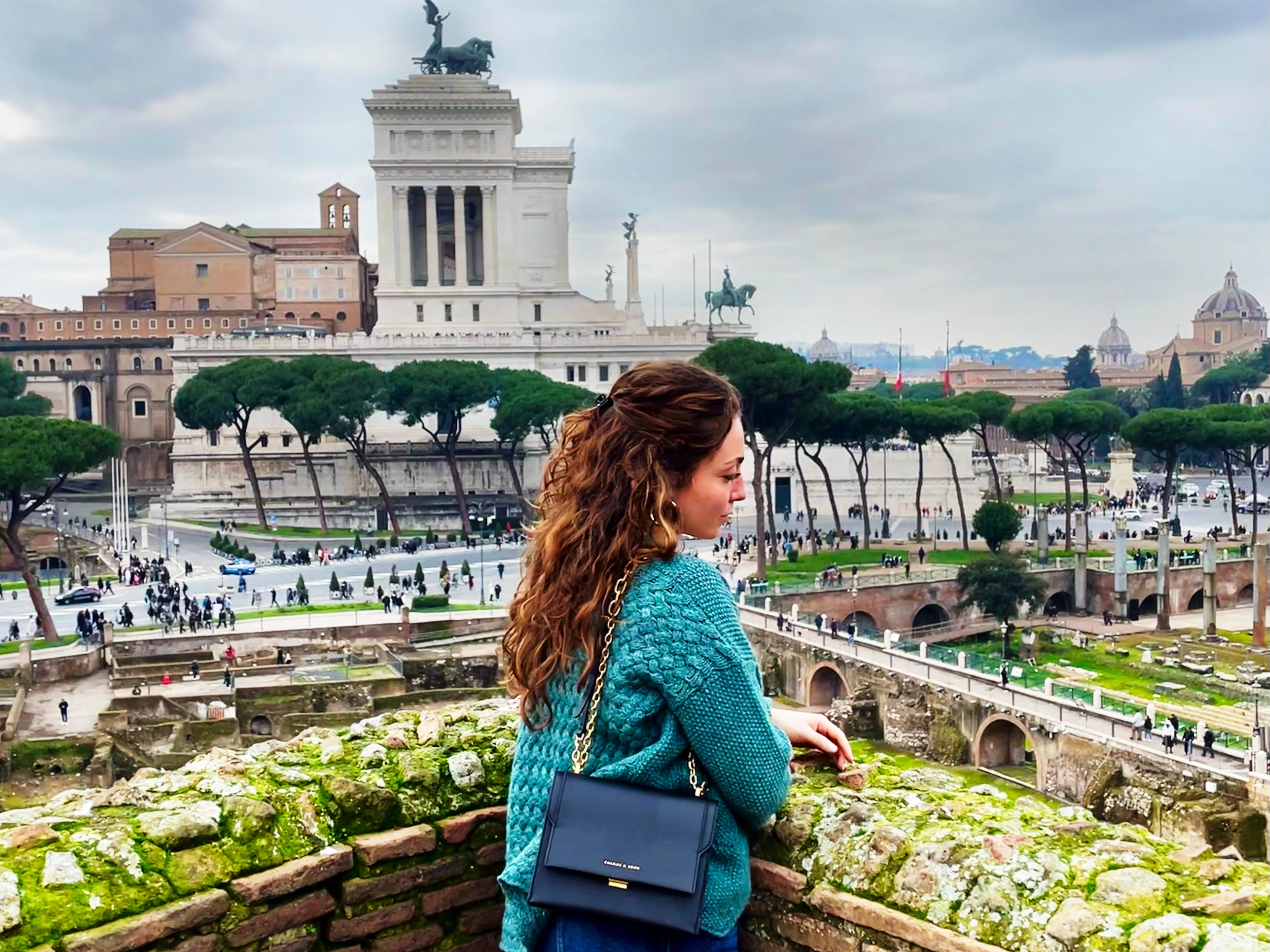
- I'm from Rome, Italy, and always see tourists visiting the same crowded sites.
- The Colosseum and Vatican are must-sees for first-time visitors, but the city has more to offer.
- Check out the impressive Stadium of Domitian, Largo di Torre Argentina, or Castel Sant'Angelo.
Growing up in Rome , I've become accustomed to skirting the hundreds-thick crowds that form outside iconic monuments like the Colosseum and the Vatican Museums — the Eternal City is, after all, one of the most popular cities to visit in the world .
Although I believe both monuments are must-sees for first-time visitors , the Italian city is home to many other sites that are just as historic and awe-inspiring.
Plus, with Italy's tourism numbers already hitting record levels last year, avoiding crowds will likely be as important as ever this summer.
On your next trip to Rome , forgo the Colosseum and the Vatican Museums and check out these underrated, less crowded monuments instead.
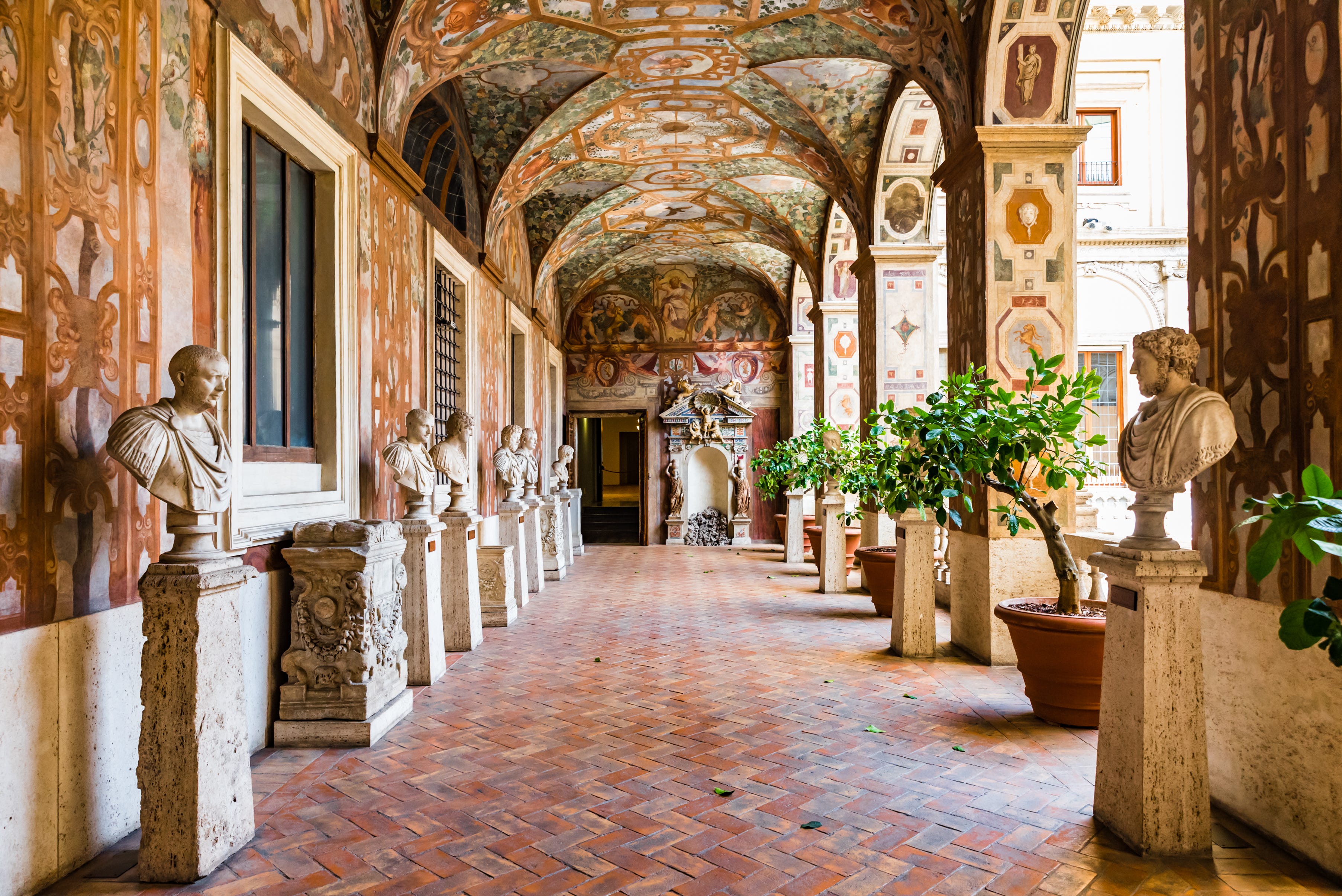
Palazzo Altemps
Located steps away from the iconic Piazza Navona square is Palazzo Altemps , a 15th-century aristocratic villa that was inhabited by the Altemps family for centuries.
It may look plain from the outside, but inside, there is a large courtyard framed by marble statues and rooms and ceilings decorated with ornate frescoes and mosaics.
Palazzo Altemps also houses a large collection of ancient Roman and Greek sculptures that once belonged to several Roman noble families.
I've noticed very few people there the times I've visited, and it felt like I had the entire palazzo to myself despite it being in one of the city's busiest areas.
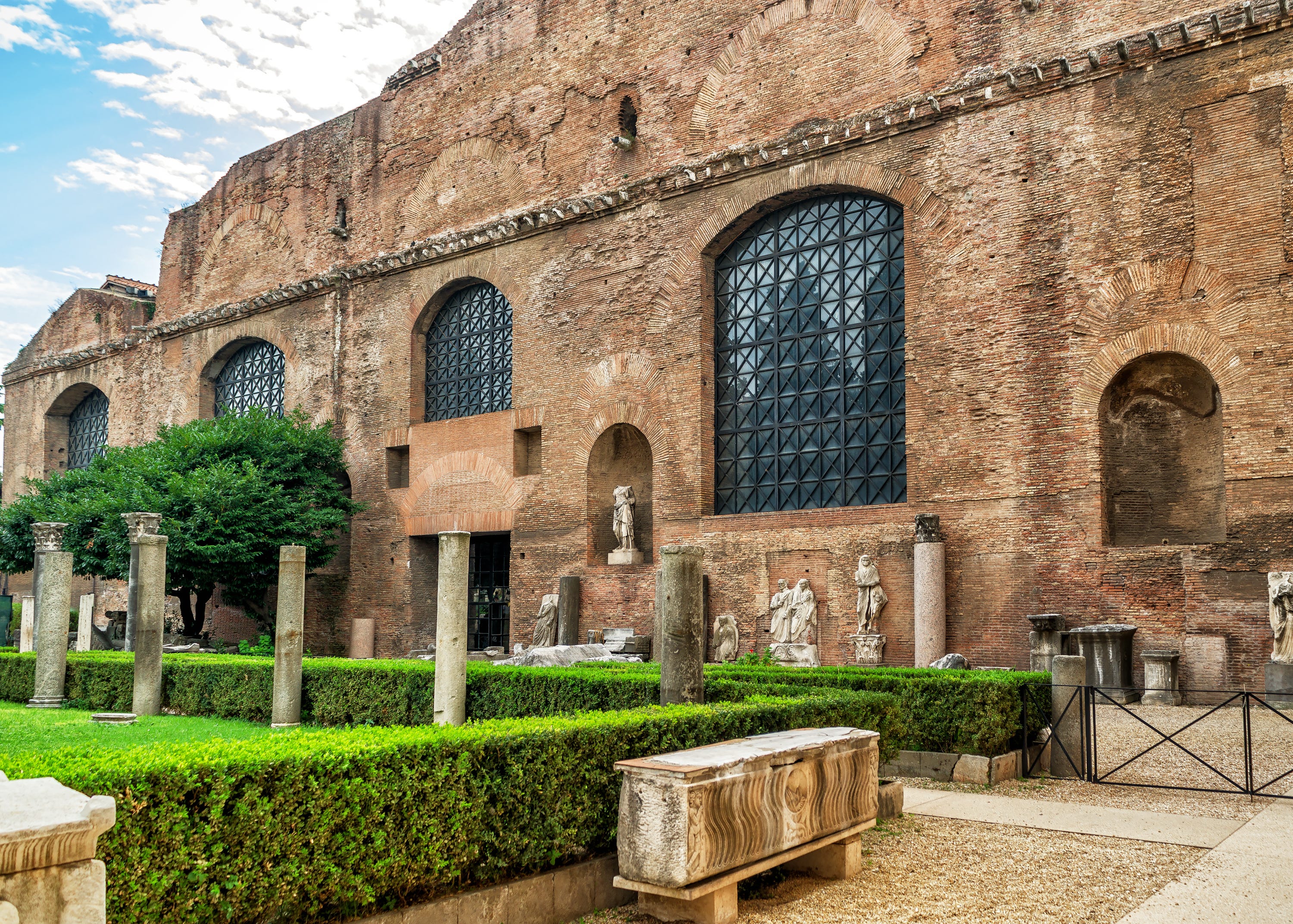
Baths of Diocletian
If you've ever wondered how the Romans bathed, then the Baths of Diocletian are a must-see site.
The massive archeological complex, located near the Termini train station, was built by the emperor Maximian between 298 and 306 CE.
At its height, the roughly 32-acre complex could welcome up to 3,000 people. Today, the area comprises the remains of the baths, a museum, and a church and charterhouse.
Much of the space is open to the elements, so I would recommend only visiting on a nice day.

Trajan's Market
Trajan's Market , widely considered to be the world's first covered shopping mall, is one of my favorite ancient Roman sites in the city because of its history and well-preserved state.
It sits squarely along the Via dei Fori Imperiali, a long road stretching from the Colosseum to Piazza Venezia.
Built by Emperor Trajan around 105 CE, the multi-level structure once housed a library, offices, and shops.
The remains of wall frescoes and geometric floor mosaics can still be seen in the ground-floor stalls. At the top of the structure is, in my opinion, one of the most beautiful panoramic views of Rome.
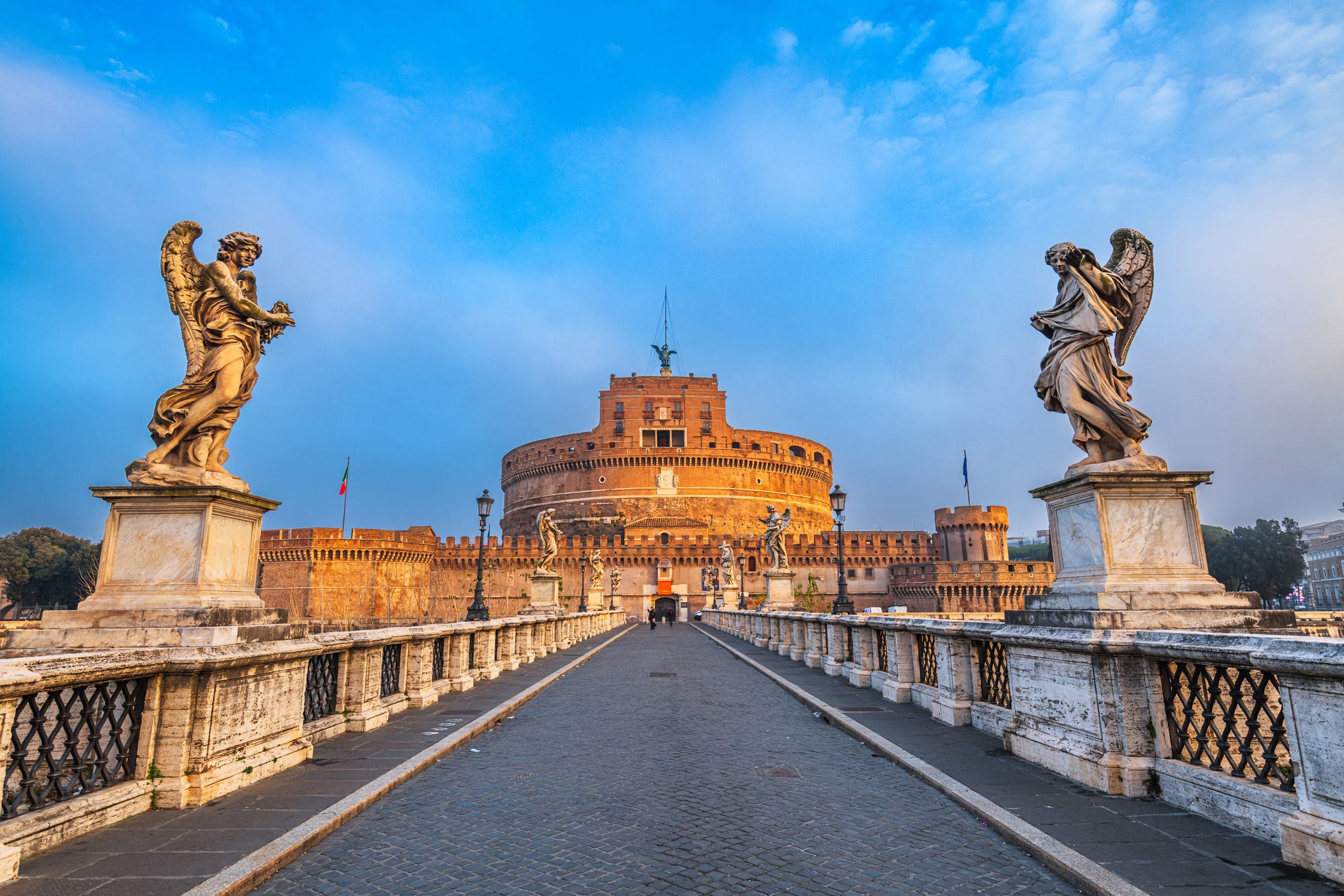
Castel Sant'Angelo
Towering over the Tiber River just outside of the Vatican City is Castel Sant' Angelo . The ancient structure was originally built as a mausoleum for the Roman Emperor Hadrian around 139 CE.
Over the centuries it was used as a fortress, military barracks, and a prison, the remains of which can still be seen inside today.
I've been visiting the site since I was little, and love the panoramic view of the Tiber River and the dome of Saint Peter's Basilica from its top, especially at sunset.
I also enjoy the structure's small, open-air café and restaurant overlooking the scenery, which is ideal for those who may need a break from all the sightseeing.

Largo di Torre Argentina
Positioned in the center of one of the city's busiest intersections is a small archaeological area made infamous for being the location of Julius Caesar's assassination.
The archaeological complex holds the remains of four temples and a theater dating back to the Republican period.
The archaeological area also serves as a cat sanctuary for the city's strays — it's not uncommon to see groups of them lounging around the ruins. They're cared for by local volunteers who accept donations by way of an Adoption at a Distance program .
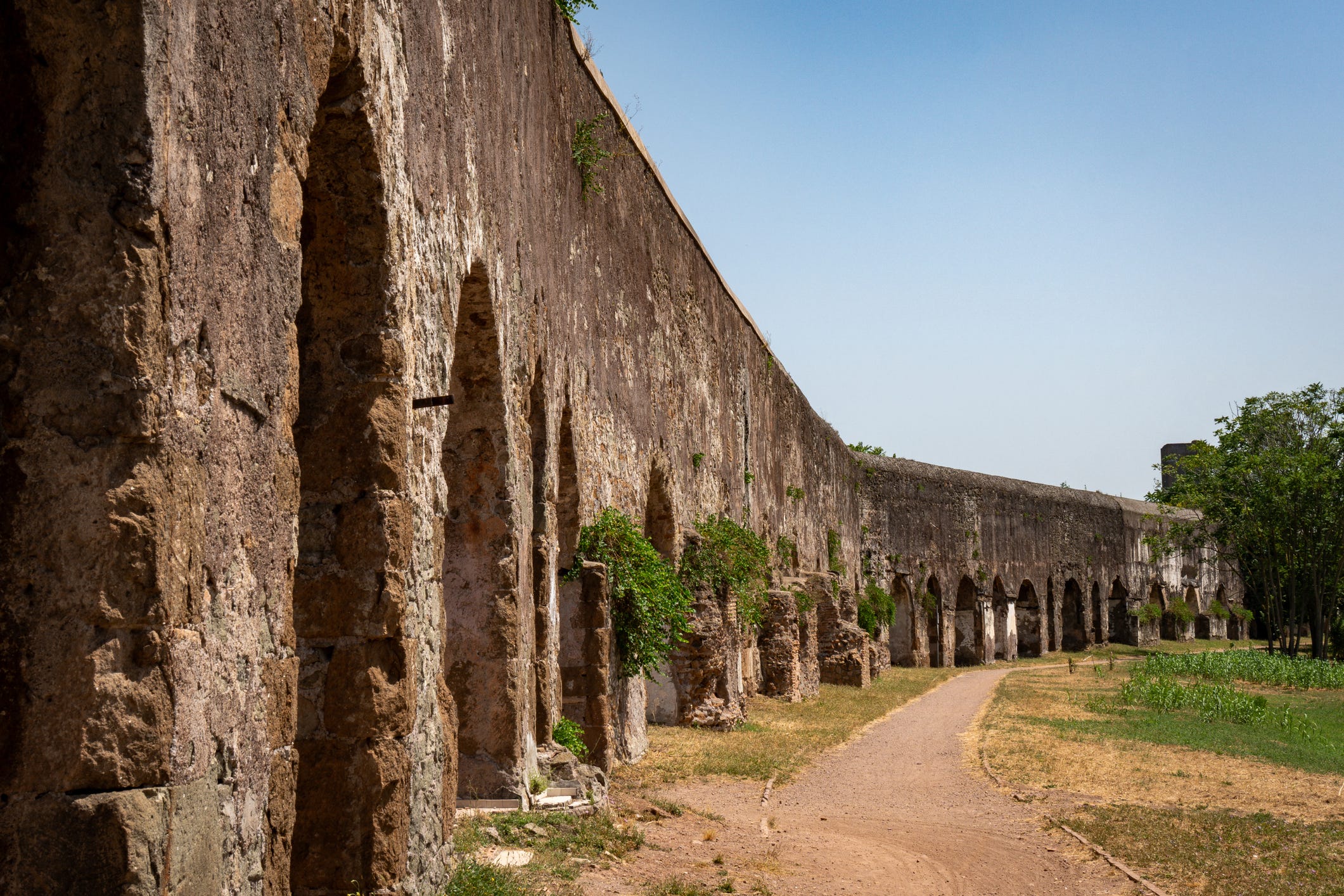
Parco degli Acquedotti
The Parco degli Acquedotti, or the Park of the Aqueducts, extends for nearly 600 acres just outside of Rome.
Also a popular spot for cycling, dog-walking, and picnics, the massive park comprises the remains of ancient Roman aqueducts that carried fresh drinking water from the mountains and into the city.
It's one of my favorite places to visit on warm spring or summer days for a walk and to escape the city for a bit, and it's particularly beautiful at sunset.
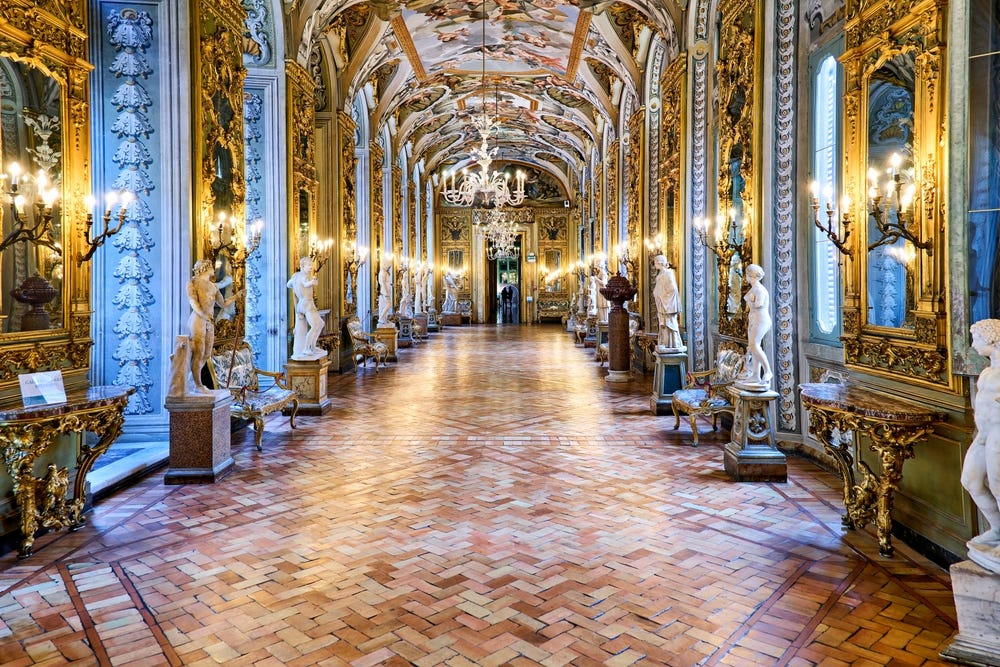
Galleria Doria Pamphilj
This museum in Rome's historic center houses the city's largest private collection, which was assembled by the Doria, Pamphilj, Landi, and Aldobrandini families.
The palace is currently owned by the Doria Pamphilj family and is located just off Piazza Venezia, on the trendy Via del Corso.
Galleria Doria Pamphilj is known for its ornate, frescoed walls and antique furnishings, as well as a large collection of oil paintings and sculptures from masters such as Velàzquez, Caravaggio, and Bernini.
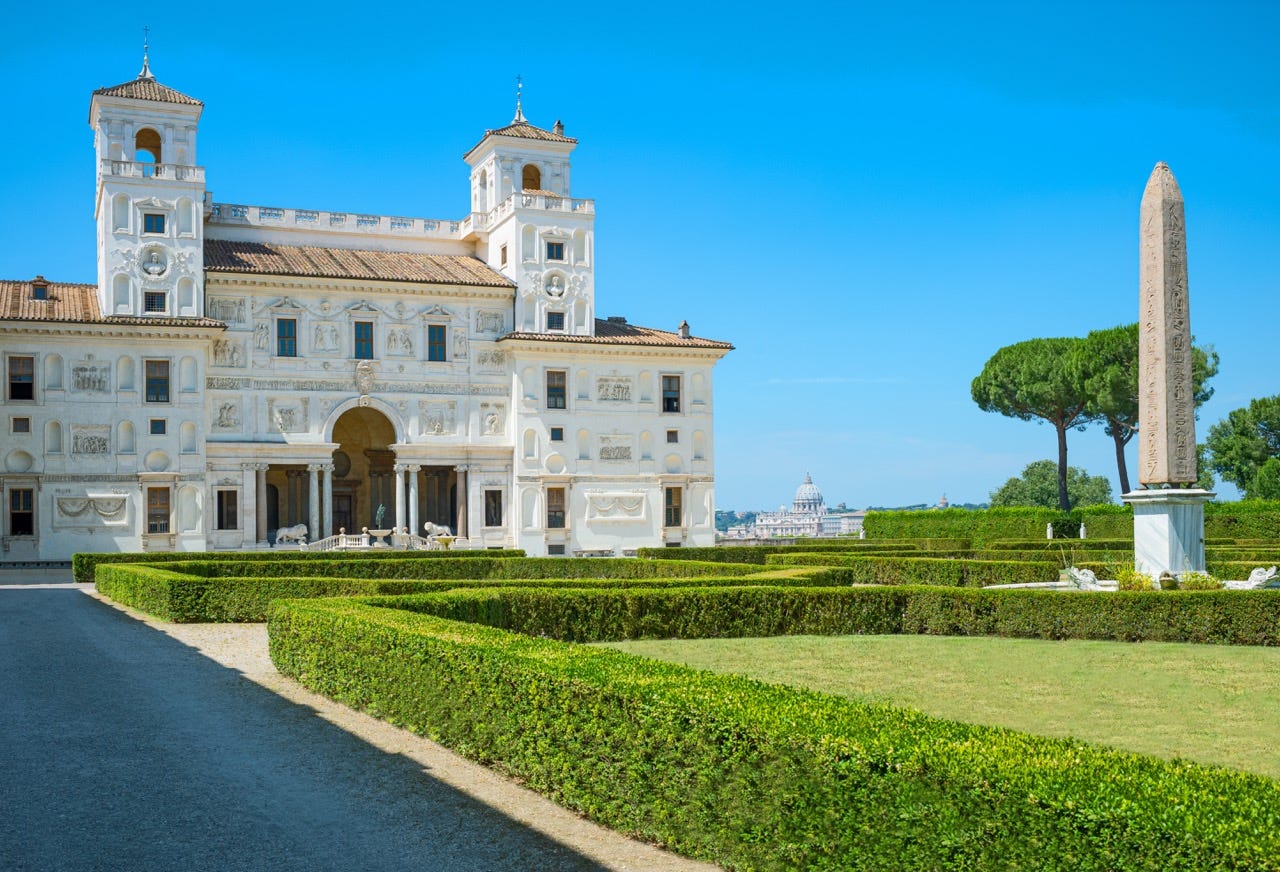
Villa Medici
The mid-16th century Villa Medici is a haven for art lovers.
The villa is atop Pincio Hill, which offers one of the most romantic panoramic views . It sits on many acres of green area, including various Renaissance-style gardens decorated with pine trees, flower beds, obelisks, and fountains.
Although Villa Medici is famous for housing thousands of historic drawings, prints, sculptures, tapestries, and furniture pieces collected by noble families over the centuries, its crown jewel is its decorative arts library.
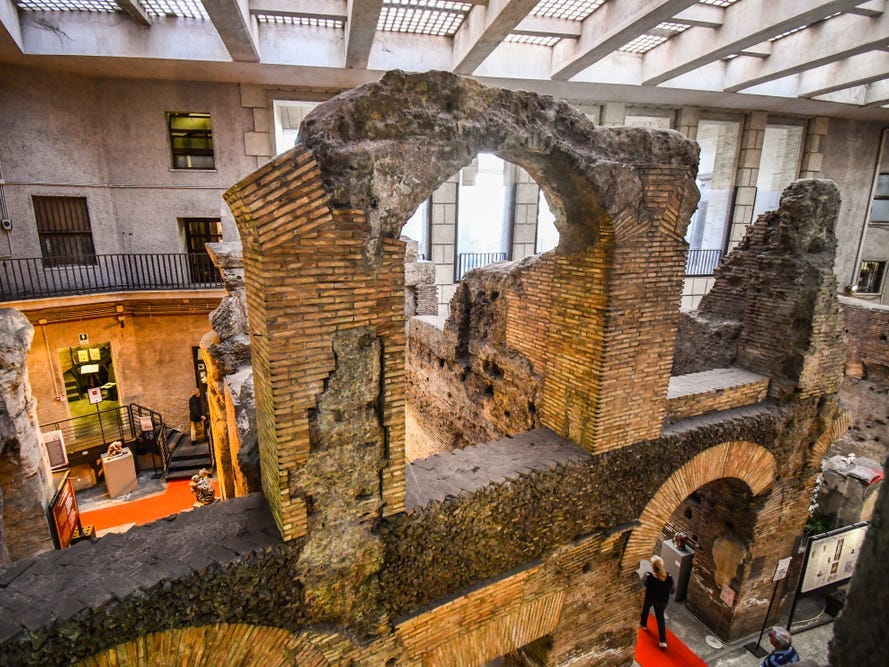
Stadium of Domitian
About 15 feet below Piazza Navona lie the nearly 2,000-year-old ruins of the Stadium of Domitian . It once housed Roman athletics and gladiator games and is thought to have seated at least 30,000 people.
This is, in my opinion, one of the most overlooked ancient Roman sites in Rome , likely because its unassuming entrance is tucked away and easy to miss.
As it's underground and much cooler, it's one of my favorite sites to visit during the city's scorching summers .
More for You
Clarence Thomas Warns of 'Danger' After Supreme Court Decision
Should You Shut Down Your Computer Every Night?
Popular Candy Recalled After Nearly Two Dozen Illnesses Are Reported
This 2-Ingredient Marinade Is the Secret to Better Chicken Dinners
67-year-old who left the U.S. for Mexico: I'm happily retired—but I 'really regret' doing these 3 things in my 20s
The 3-Mile High Tsunami That Smashed Into The East Coast
NFL News: Tom Brady admits one big regret after watching Patrick Mahomes with Chiefs
Top 20 ‘rudest’ cities in America – is yours on the list?
10 Things to Try When You’re Too Depressed to Get Out of Bed
Alvin Bragg Made Wise Move In Agreeing to Postpone Trump Sentencing: Analyst
'Don't waste your time doing this' when applying to a job, says hiring pro—4 things to prioritize instead
Common Kitchen Ingredients That Will Protect Your Home And Yard From Fleas
McDonald's permanently removes beloved item from menu after 35 years amid 'lack of interest'
The origins of 50 common sayings that may surprise you
Aaron Rodgers' whereabouts during unexcused Jets minicamp absence revealed: report
Huge Impact Crater Discovered in America Is 3X the Size of the Grand Canyon
‘Million Dollar Listing: Los Angeles’ stars explain how the new ‘mansion tax’ is affecting the real estate market in the city
I used the KonMari method to declutter my house — and it changed everything
10 Items You Should Never Pass Up When Antique Shopping
Stephen King's Trump Supreme Court Comment Goes Viral

IMAGES
VIDEO
COMMENTS
The Baths of Diocletian are located on Viale Enrico de Nicola, 78, 00185, close to Termini train station. It is centrally located, and within walking distance of Rome's most famous sites - the Trevi Fountain is 20 minutes away on foot. You can easily reach the baths using public transport.
Rome: Learn how the Romans lived on a Half Day Small Group Tour. Historical Tours. from. $140.27. per adult (price varies by group size) The area. Viale Enrico De Nicola 76, 00185 Rome Italy. Neighborhood: Esquilino. Old school vibe from the very beginning is the only way to describe the Esquilino neighborhood.
The Baths of Diocletian entrance is located on the Viale Enrico de Nicola, 00185. Once you have got in, spend the time touring the baths first, which are simply stunning. You will then have time to take in the gardens and the more traditional museum displays. To get to the Baths of Diocletian location, take the Metro line A or B to Termini.
Diocletian, ill and tired, abdicated in 305. The Roman public baths remained open until 537, when the Goths cut off the aqueducts in an attempt to conquer Rome. In 1561, Pope Pius IV ordered Michelangelo to build the Basilica of Santa Maria degli Angeli on the remains of the baths to honour all the Christian slaves who died.
The Baths of Diocletian are a unique monumental complex because of their size and exceptional state of preservation. They were constructed in a period of only eight years, between 298 and 306 AD, and extend over an area of 13 hectares, in the area between the Viminal and Quirinal Hills. The complex was able to accommodate up to 3,000 people at ...
Written June 26, 2024. Jennifer D. 0 contributions. 5.0 of 5 bubbles. Private tour with Francesco of Spanish steps, Trevi fountain and pantheon. We had a private tour of Spanish steps, Trevi fountain and pantheon. Our tour guide Francesco was incredibly knowledgeable. He explained the whole time line regarding the Spanish steps and how they ...
The Baths of Diocletian (Terme di Diocleziano)—the largest public baths in Imperial Rome—once covered 32 acres (13 hectares). Though much of the original complex was destroyed or integrated into later churches and palaces, what remains still offers a sense of the vast structure, which hosted up to 3,000 bathers in its heyday. Learn more.
The Baths of Diocletian are a colossal thermal bath in Rome dating to the III century AD. The construction lasted eight years, between 298 and 306 AD and take their name from Emperor Diocletian, during whose empire the baths got built and to whom they were dedicated. Diocletian's Baths are unique. They are among the biggest ancient thermal ...
Baths of Diocletian: Our most recommended tours and activities. 1. Roma Pass: 48 or 72-Hour City Card with Transport. The Roma Pass network includes over 45 monuments, museums, and archaeological sites, including the Colosseum, Roman and Imperial Forums, Capitoline Museums, Ara Pacis, Trajan's Market, the National Roman Museums, the Caracalla ...
Contact the museum before your visit. How to get there The National Roman Museum - Baths of Diocletian. Via Enrico de Nicola, 78; 00185 Roma. Open map. Opening time From Tuesday to Friday: 2 p.m. - 7.45 p.m. On Saturdays and Sundays: 10.30 a.m. - 7.45 p.m. Closed on Mondays. Phone 06-684851. Contacts [email protected].
The Baths of Diocletian (Terme di Diocleziano)—the largest public baths in Imperial Rome—once covered 32 acres (13 hectares). Though much of the original complex was destroyed or integrated into later churches and palaces, what remains still offers a sense of the vast structure, which hosted up to 3,000 bathers in its heyday.
Tour of the Nationale Roman Museum! Check out the National Roman Museum tour in the surviving structures of the monumental complex of the Baths of Diocletian!. National Roman Museum. The tour of the National Roman Museum begins to the Baths of Diocletian, wonderful and suggestive thermal complex built between 298-306 AD, the largest spa of the Roman Era, extended for about 13 hectares and able ...
This allows one entrance to the Baths of Diocletian, Palazzo Massimo and Palazzo Altemps. Please note that Crypta Balbi is temporarily closed. It is valid for 1 week from the day of purchase. Full price € 12; Reduced € 8 Available for EU citizens aged between 18 and 25, upon presentation of a valid identity card.
Upgrade your tour to include a 1-hour visit to the Baths of Diocletian, once the most luxurious public bath in Rome. Skip-the-line entry and guided tour of the National Roman Museum-Palazzo Massimo alle Terme in Rome. Ideal for history enthusiasts. Bypass long lines and explore the museum alongside an expert guide.
National Roman Museum and Diocletian Thermal Baths Guided Tour. 3 Via Montebello 0.17 km. from €129.00 EUR. Duration: 3 Hours. Organizde by: Raphael Tours & Events. 13 Reviews. If you're a history enthusiast visiting Rome, a visit to the National Roman Museum-Palazzo Massimo alle Terme is an absolute must.
Private or small-group 2-hour tour of the National Roman Museum with skip-the-line entry. Admire collection highlights including the 'Boxer at Rest', the 'Discus Thrower', and the 'Sleeping Hermaphrodite'. Upgrade your tour to include a 1-hour visit to the Baths of Diocletian.
Opening hours of the Baths of Diocletian. The Baths of Diocletian are open from Tuesday to Friday from 2 to 7.45 p.m., as well as on weekends from 10.30 a.m. to 7.45 p.m. Admission tickets to the Baths of Diocletian. Admission tickets are €13 at full price, €2 for European nationals aged 18 to 25 and free for European nationals under 17 and ...
Palazzo Massimo Roman Museum and Diocletian's Baths Private Tour with Phd Guide. 1. Historical Tours. from . £197.54. per adult (price varies by group size) Rome: Learn how the Romans lived on a Half Day Small Group Tour. Historical Tours. from . £110.41. per adult (price varies by group size)
Website. museonazionaleromano.beniculturali.it. The Baths of Diocletian, known as "Terme di Diocleziano" in Italian, were ancient public baths built in ancient Rome during the reign of the Roman Emperor Diocletian in the 4th century AD. They were the largest and grandest of the public baths in Rome, capable of accommodating up to 3,000 ...
The Baths. The area occupied by the Baths of Diocletian is between the Piazza dei Cinquecento, opposite Termini Station, Piazza della Repubblica, Via Cernaia and Via Volturno, where the main entrance is believed to have been located. At the centre of the opposite side, along the rectangular boundary that delimited the complex, there was a vast ...
Of all the marvelous architecture built by ancient Romans, the city's baths were among the grandest. Inaugurated in 306 AD, Diocletian's Baths was the granddaddy of them all. It was once the largest public bathing complex in Rome, sprawling over 30 acres. The baths were meant to surpass the Baths of Caracalla and could accommodate up to ...
National Roman Museum - The Baths of Diocletian Duration: 1 hour The greatest thermal plant ever built in Rome, included gyms, libraries and swiming pool and could accommodate up to 3,000 people at the same time.
Like many ancient Roman ruins, the Baths of Diocletian are difficult to interpret without the help of a guide as part of an archaeological tour. Many private tours of Rome's most important ancient sites include a visit to the Baths of Diocletian and the adjacent National Roman Museum, along with skip-the-line access to the Colosseum and Roman ...
Welcome to the Baths of Diocletian page, where I explore the largest bathing facility in the whole Roman Empire. Built in 306 AD, this luxurious and enormous Imperial Roman Baths served 10,000 people daily for 250 years.Much of this facility still exists, and it has been transformed into museums, gardens, and a stunning Basilica designed by the great Michelangelo himself.
If you've ever wondered how the Romans bathed, then the Baths of Diocletian are a must-see site. The massive archeological complex, located near the Termini train station, was built by the emperor ...